Edo at ITC Gardenia
Edo : Restaurant Review for "Japan : Debate on a Plate" multi-course meal (Nov 2013)
Rating - 3 & 1/4 stars out of 5 (notable cuisine , severely undermined by negligent service)
This November 2013 meal was masterminded by Chef Vikramjeet Roy who was a guest chef that month in Edo.
Bangalore, India.
I am always in search of experiences which give me educative pleasure. The full range of these activities is beyond the scope of this article but what certainly falls under the purview of this review is an occasion hosted in Bangalore’s 5 star eco-plush ITC Gardenia which promised contrapuntal brilliance by pairing top-notch Japanese cuisine by a Nippon veteran, with modernist riffs masterminded by a hotshot Indian chef. It was titled “Japan Debate on a Plate”
The debate would consist of Traditional dishes offered by Sensei Kikuta San and Modern ones by Chef Vikramjit Roy .Both anecdotally and by Google search I have found nothing about the former, but heard enticing reports about the latter - Vir Sanghvi calls Vikramjit Roy “hyper-talented” and “the single most innovative Japanese-cuisine chef cooking in India today” (after my meal, I was inclined to agree)
Chef Roy highly admires Ryugin – the formidable, internationally famous restaurant that rules the culinary scene in Roppongi Tokyo. He also lists the bone tweezer as an “essential kitchen tool”. I was very curious about this unique, culturally syncretic phenomenon – an Indian Chef cooking Japanese food and plating it in European fashion – and successfully too, going by the accolades heaped on him.
The start to this “Japan Debate on a Plate” was not auspicious. I called up the hotel using the advertized number and three separate people were politely clueless about the event – one of them asked me to explain about the event! I had mildly unsettling visions of arriving at Edo and ending up as the only guest there while Chef Roy and Sensei Kikuta San would “debate” amongst themselves (this has happened to me before, wherein I was the only patron in Graze at Taj Vivanta for one and a half hours for lunch, but that experience was fantastic!)


I hoped that this putatively hedonistic fiesta would be better than the outrageously priced Rs.20,000 per person Chateau Margaux et Alain Passard affair in Bangalore last year where that iconic French chef disappointed his customers with an off-the-mark 5 course lunch. Anyway, this "Debate on a Plate" dinner I attended, cost Rs.4777 all inclusive.
When I entered the restaurant at 8pm, two Americans were coming out - a young lady in Uncle Sam’s accent said “We’ll be back here for sure!” Inside the restaurant, and considering this is Bangalore, I was amazed to note that in the main dining area, there were 5 patrons of European extraction compared to 4 Indians –a ratio I’d never before witnessed in this city’s restaurants. That state of affairs lasted for 20 minutes before that proportion started reversing.
Chef Roy was busily navigating through his duties for the evening ,when his brisk passage through the restaurant was interrupted by a smiling nod I gave to him – the man drew up and I congratulated him (unlike I daresay, the Nobel-Obama episode) for his achievements. Chef Roy from then onwards, I’m glad to say, took over the charge of my meal. He explained that the restaurant dishes he cooks, are of the type he himself would like to relish (this may seem obvious to the reader, but I feel it is still an insightfully valid statement) He’s worked closely with two other pezzonovantes - Manish Merhotra of Delhi’s Indian Accent, and Gaggan Anand who’s made an international splash with his neo-cuisine in Bangkok. In answer to my various questions, he replied that Chennai’s ITC Grand Chola clientele was indeed recognizing his potential, that he felt at ease while cooking in any city and that he’d designed bolder cuisine (as compared to other cities) during this “Debate on a Plate” Bangalore session because he felt Bangaloreans could appreciate these cosmopolitan riffs (I didn’t entirely share this sentiment – stand-alone avant-garde restaurants in Bangalore have a tough time surviving)
Mr.Vikramjit Roy

Here are some captures from the Robatayaki offerings near me.

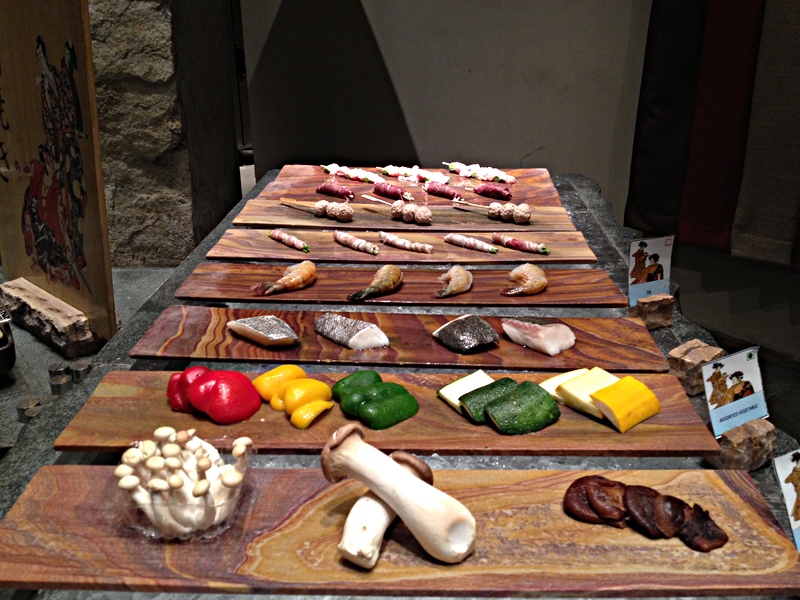
Chef Vikramjit’s Martini with Japanese protocol : VR-San instructed me about the sequential tasting steps, and I strictly followed suit, not wanting some hiding Ronin to suddenly lunge at me for breaking tradition.
1) Marvel at the cold smoke which swirls over and suffuses the entire table-top after this “liquid smoke” is poured into your glass
2) Wait for those beautiful clouds to clear away – you might knock over something if you try to reach for your glass through that white fog.
3) Slurp the savoury-tart alcohol of this neo-Nippon Martini which has Ume, Shochu and small rinds of Yuzu
4) When some of that taste is still in your mouth, have the spoonful of celery caviar
5) Then bite into the nutty notes of the Tofu Skin
6) And then mercilessly drag the mirin-soaked cherry tomato (don’t worry, it’s too drugged to feel anything) through the celery salt, and then pop this briny blend into your mouth.
Rather than mind-smashing taste, it was the shifting facets of fun that set apart this drink with “airs”.

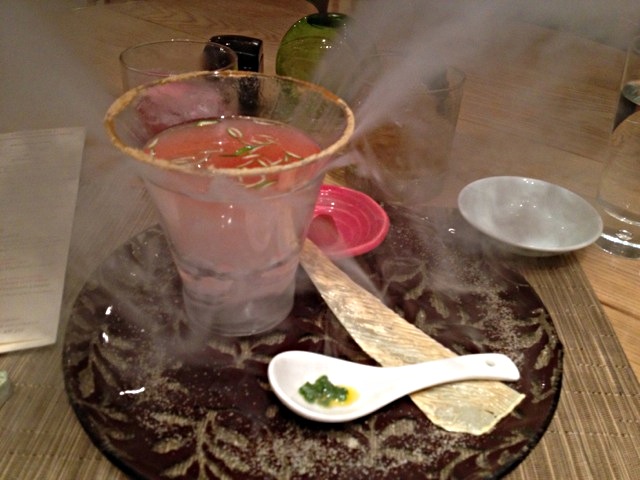
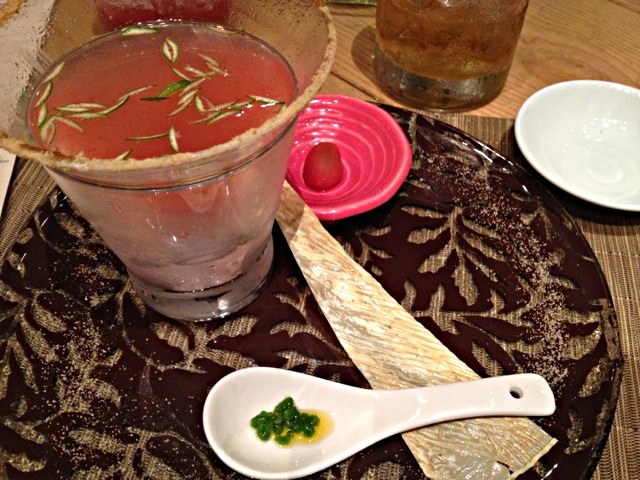
First Dish – Complexity further ratcheted up with the very first solid gear – a rendition that again compensated for the simplicity of the restaurant’s décor with the most elaborate starter I’ve tasted thus far in this Bangalore visit. Sculpted wooden picks speared velvety soft, beautiful salmon (tartare-like) which was topped with mirin-infused mayo and kelp, while the base of this small skewer had confit melon which wasn’t strictly necessary (PS: Only months later did I realize that good salmon actually tastes likes a melon of the sea) Upon my asking, Chef Roy explained that he prefers to pair the central components with a selection of accoutrements he personally likes – so he chose to plot the rest of this multi-partite dish’s architecture with the smoothness of a smoked corn mash, a chilled dollop of avocado, a bite of Buckwheat spinach crisp, another crunch of Tatami (dried sardine), chased with the alternate feel of a spiced potato crumble, and then just to make sure that the chef wasn’t being overly frugal - lotus root wafers parked atop miso cream cheese! I can’t say I enjoyed all of it, but these myriad persuasions certainly kept me preoccupied while the dish stayed on the table.


Johnny Walker Cocktails – “Rising Sun” comprised Pickled ginger, Wasabi and Grenadine – it struck a distinctly Nipponese gong and had a fine balance of all those constituents, with a little of the wasabi just gently searing the pharynx at the end.

“Old Japanese Favourite” was rather tame. I could certainly say it was whiskey-based, but the elucidations stopped there.

Next up was the best savoury course of that night (we are only considering the food here) I was told that the dish had “4 zones” (hearing this, I subliminally realized how the age of the “intellectual chef” has arrived in Bangalore too) Rather than the details of those 4 zones some of which were barely discernible by taste, it may be more pertinent to point out the dish's crisp roundel with a slab of foie gras planted inside that wheel, and Edamame soup poured from a creamer at the end. The soup elegantly distilled the essence of that bean in a thick but very smooth consistency. You could pair this with the slightly salty, nutty umami of the truffle reduction, and try its textural contrast with the roundel –this last combination bore an uncanny conceptual and colour-matched resemblance to the gloriously riotous Masale Puri of Bangalore wherein the fried paapdi discs are set into a pea soup. But the undisputed champion of that plate- which I dared not obscure by blending it with any other component – was the roasted Foie Gras. It was simply fabulous, as subtle as it was rich, with its caramelized silken fattiness creating such a heady aura in the mouth (on most days of my life, I’d prefer this to the high of alcohol) that I was left in no doubt why this is considered the Rolls Royce of luxury foods.





Service (4/10) – Fail. The negligence, in other words the sheer lack of vigilance, surprised me, and a significant upgrade in the level of attentiveness is sorely needed if ITC Gardenia’s marquee Japanese restaurant is to adhere to 5 star hotel standards or if it wants to competently host these tertiary-level food extravaganzas. Often there would no staff in Edo’s main dining area to respond to my beckoning gaze, and the long periods of waiting frustrated me, while other patrons noticed my predicament much sooner than the staff did. All of my plates had Euro-influenced Japanese food that needed knife and fork - it would have been a joke to eat it with the chopsticks on the table, I’d furthermore specified at the start that I’m terrible with chopsticks and thus would need a knife, fork and spoon – but this cutlery was not brought to the table for 3 separate courses until I requisitioned them (for the salmon course, I had to ask twice before any action happened) The used food-stained cutlery after my main course was left on the table for several minutes while desserts were in the offing.
The next dish had an energetic density of colour and feature that would have satisfied Hayao Miyazaki. Kurobuta pork slices had been topped with a sauce of egg and wagarashi (Japanese mustard), contrasted with the mild citrus of ponzu while the slightly briny, al dente whispers of seaweed were grouped in the center. All this was surrounded by the tart-savoury buzz of Togarashi powder (a distant cousin of our orange chutni pudi) If ever Chef Roy exactly replicates this dish for you, do not expect to find pork-centric glory –rather these slices give a meaty background, or even a playground for all the above ingredients to jointly score a delectable goal.

Entranced by the words “Tsukiji fish market” on the special menu's appetizer section, I was unable to choose from the Modern Vs Traditional but Chef Roy generously sent both to my table. The fish and prawn sushi I didn’t care much for, though they texturally made the cut, but I enjoyed the superbly slick softness and refined flavor wave of the salmon, more so than the red snapper or yellowtail. Top-notch sushi and sashimi is meant to be eaten in seconds once the chef hand-crafts and places them in front of you, but here they were brought along with the Edamame-Foie gras appetizer and placed a little beyond that dish. It signifies the lack of importance accorded by the team that evening, to this central food item of Japan.

Ambience – Very restrained. Do not expect luxury here, for the conscious choice of design seems to be in favour of a Spartan Japanese “aesthetic”. Granite floors support chairs of polished wood which are informal lounge ones with red seat cushions. Tones of blonde wood largely contribute to the look of the restaurant. A glass-cordoned Robatayaki grill counter is positioned on the left of the restaurant as you enter.


I never saw Chef Kikuta San , and tasted only two of his dishes,both which had limited raptures – hence I got little opportunity to assess why he is called Sensei.
When I expressed interest in the Gindara (black cod) with sweet miso, saying that it was "Nobu-style", Chef Roy told me that it was different from the Nobu favourite, anyway he didn't seem enthusiastic about this choice and elected to let me try the lamb instead. Lamb in sake (from the Traditional menu) was a cut that was about a centimeter thick, and was merely above average. Its provenance was from my current country of regular domicile – New Zealand, which I found drily amusing since you can get better lamb than this, both in India and in NZ. I’d received a very similar cut of lamb in Alba at JW Marriott , and am beginning to suspect that this thickness, along with this style of flat cuts, might not be adequate to get a mouthfeel of profoundly tender lamb.

Chilean Sea Bass was snowed under by other components, but it had buttery tenderness, made creamier by sushi sauce, and given a cut and lift by tamari teriyaki. A subsided mini hailstorm of various brunoised vegetables, and very smooth quenelles of Japanese-style fried rice gave further body. While this whole set-up is not a show-stopper, it is certainly an excellent filler.

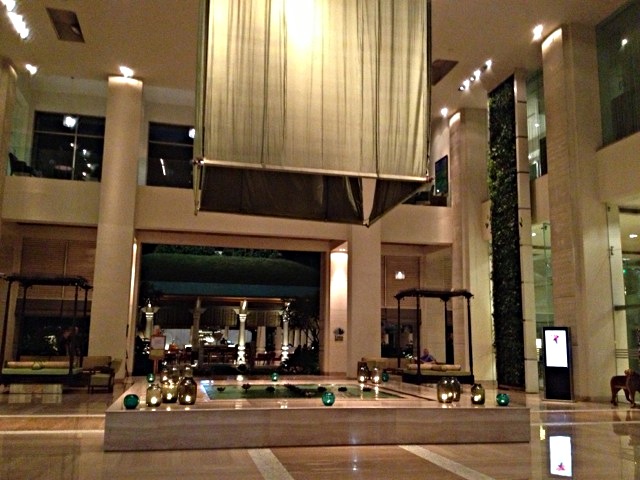
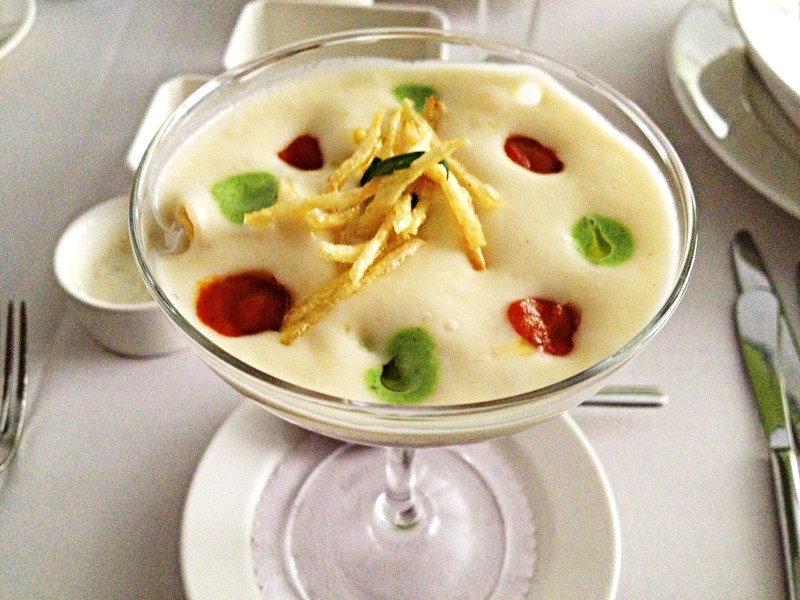
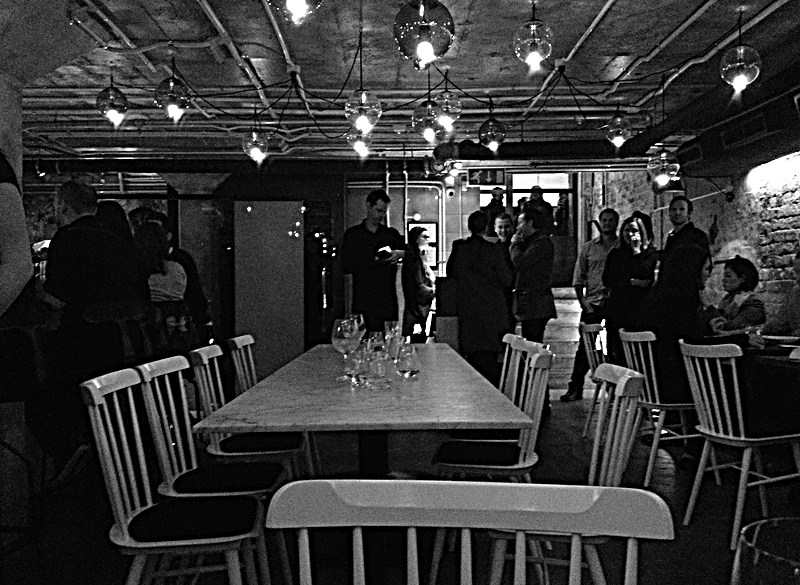
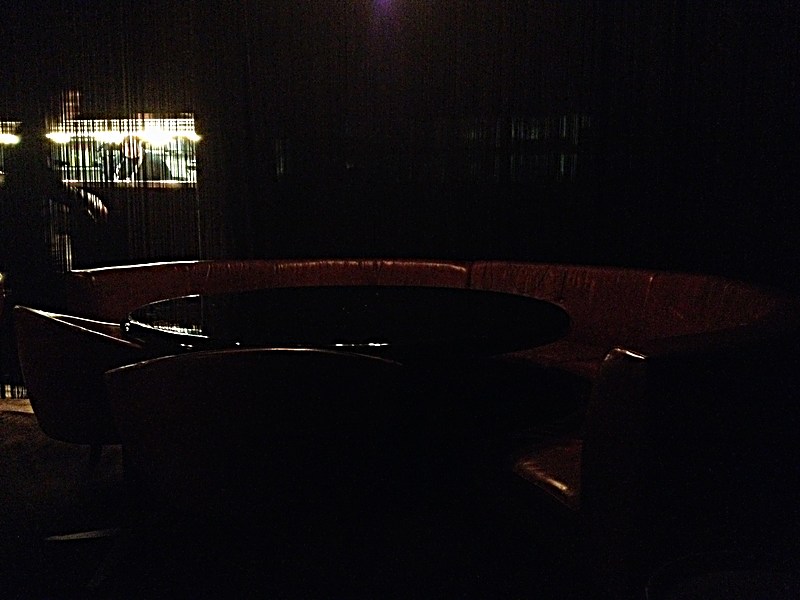
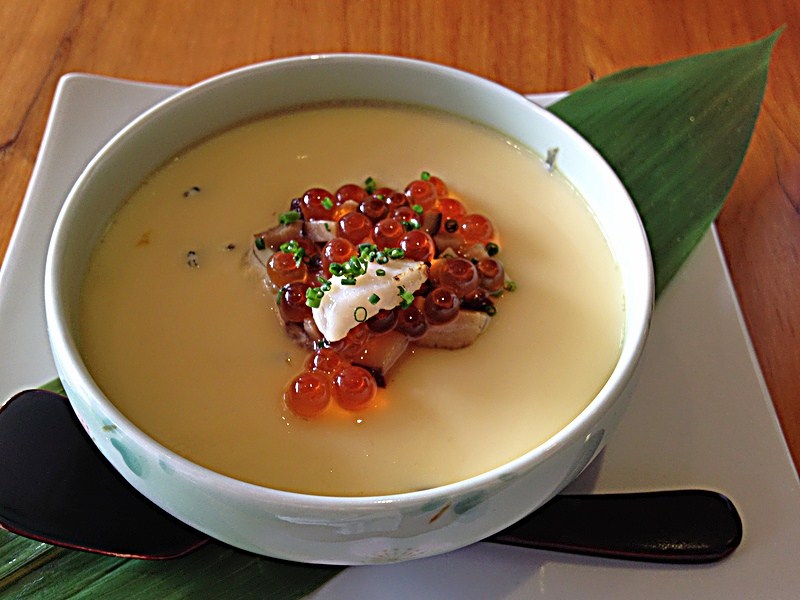
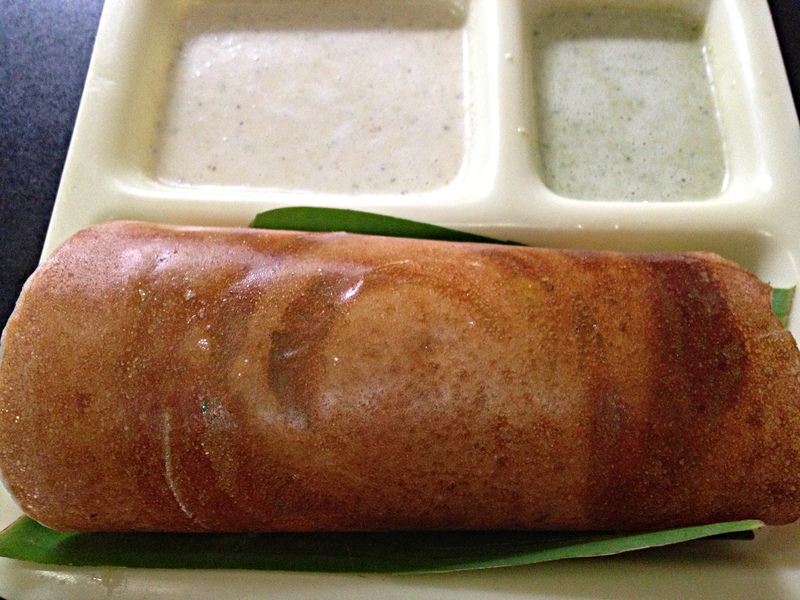
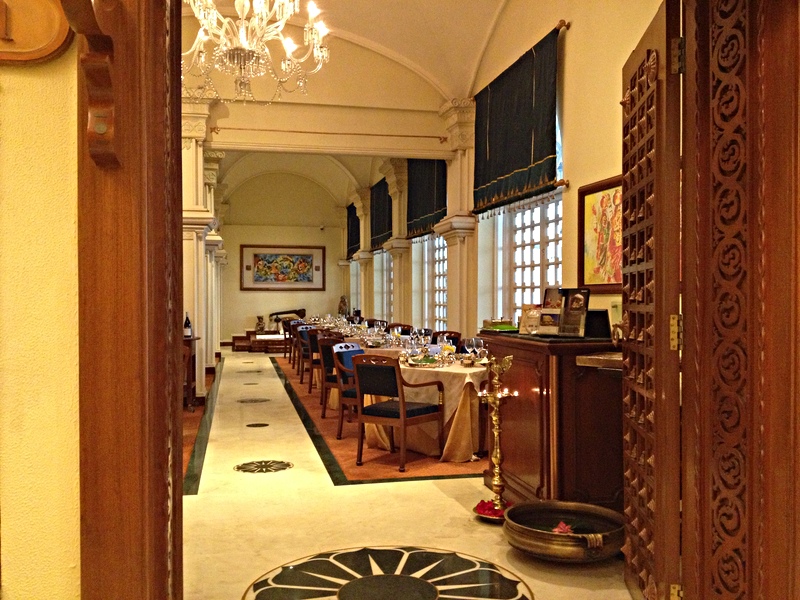
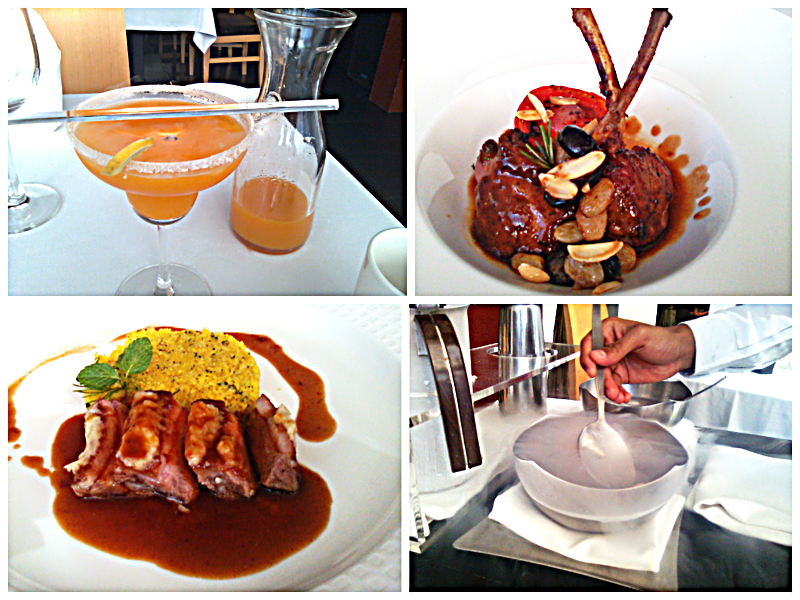
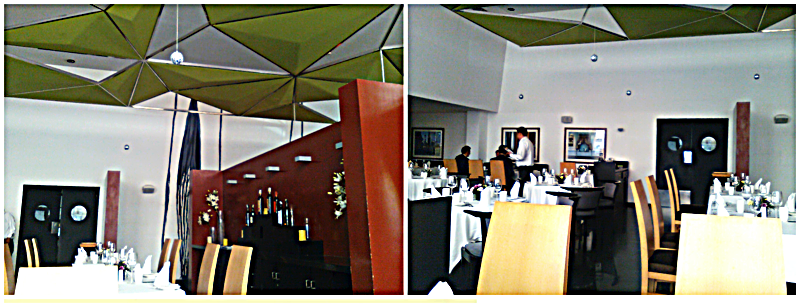
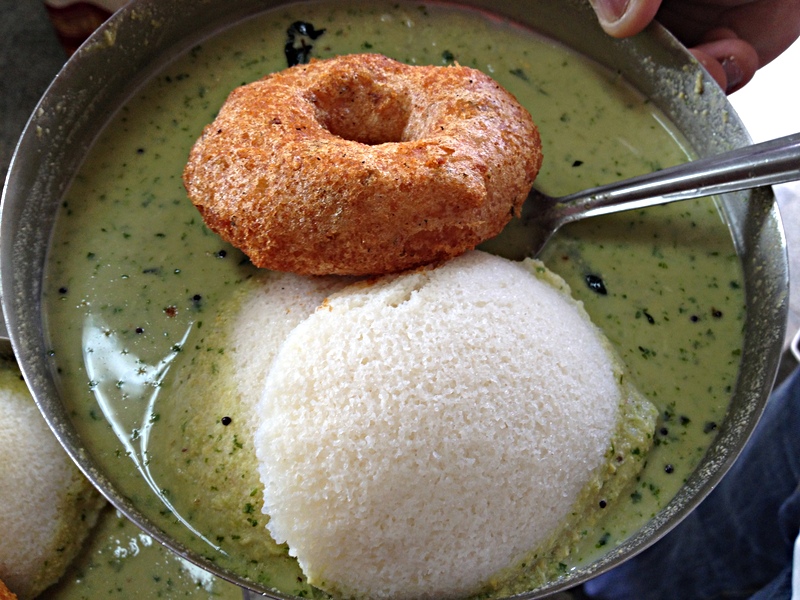
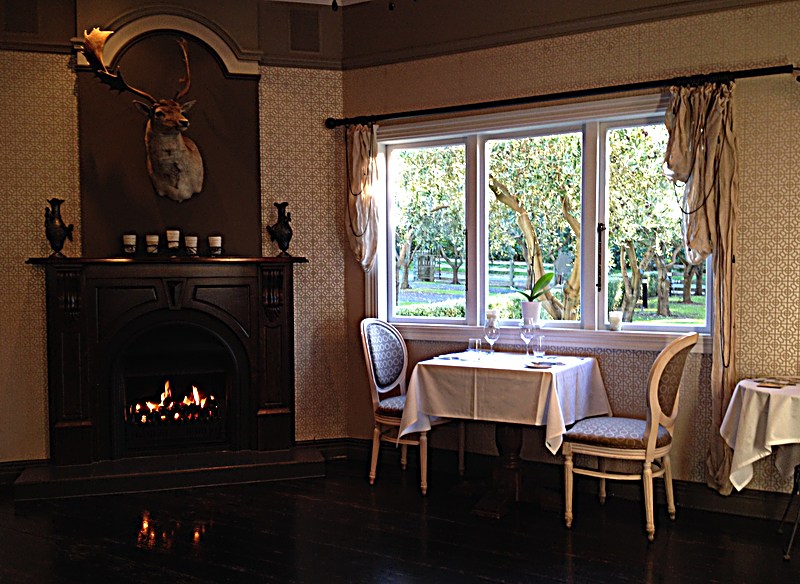
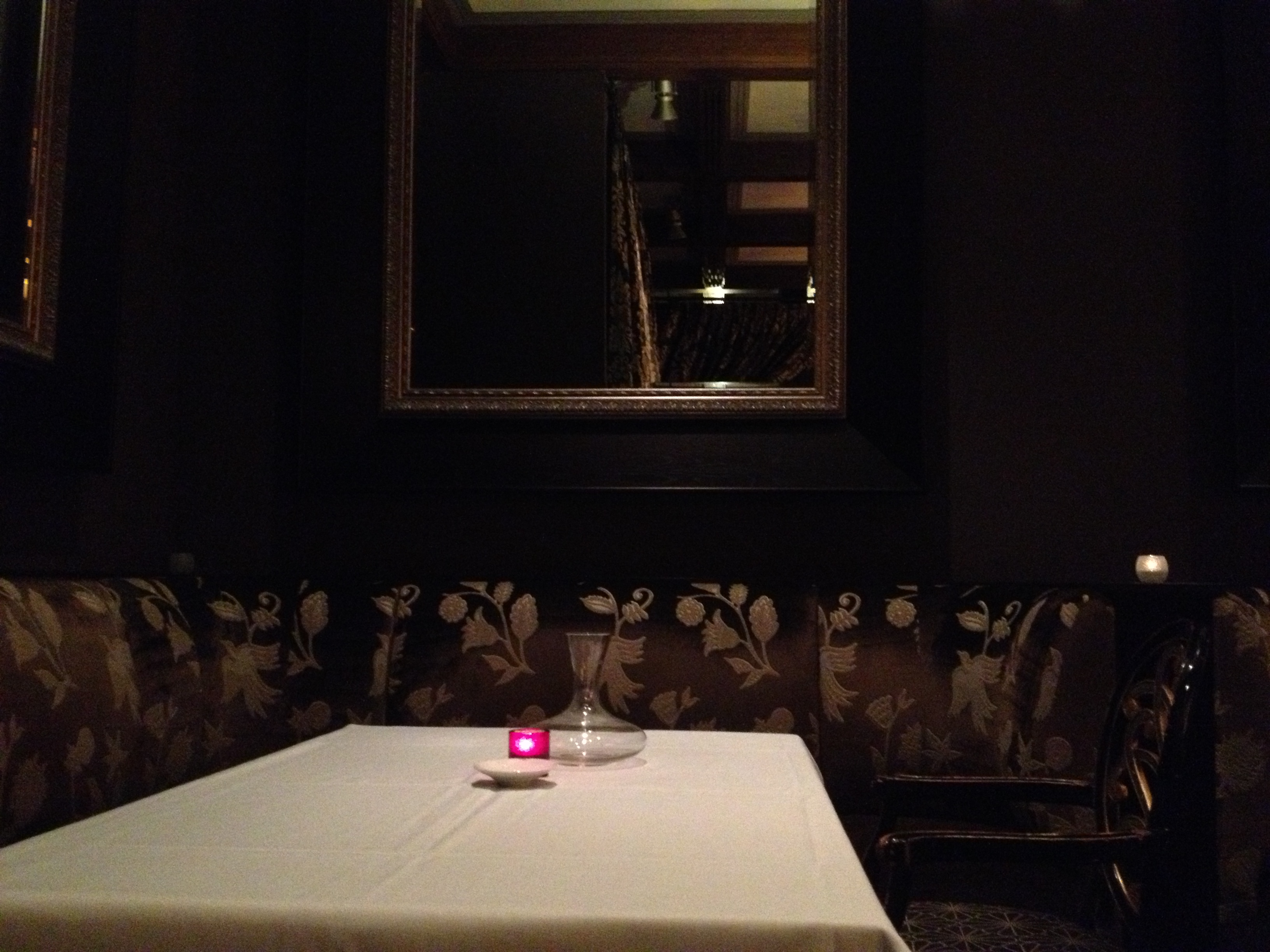
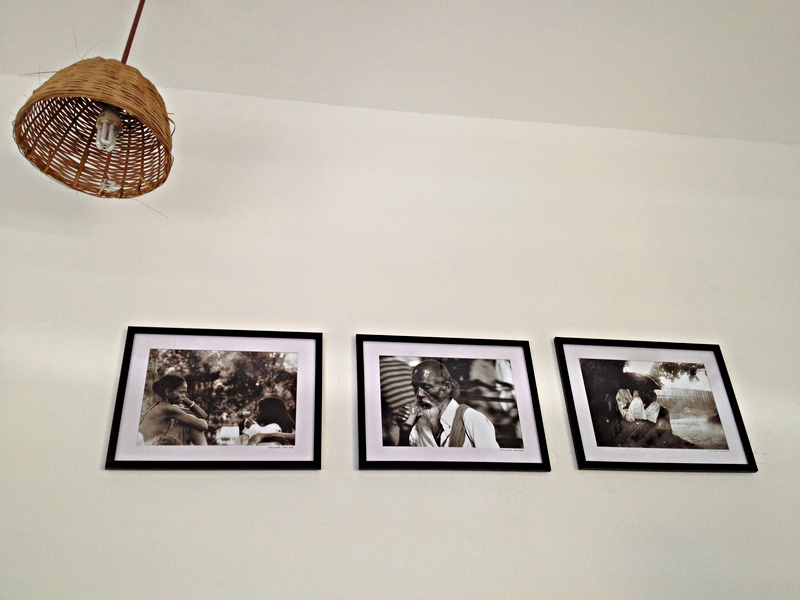
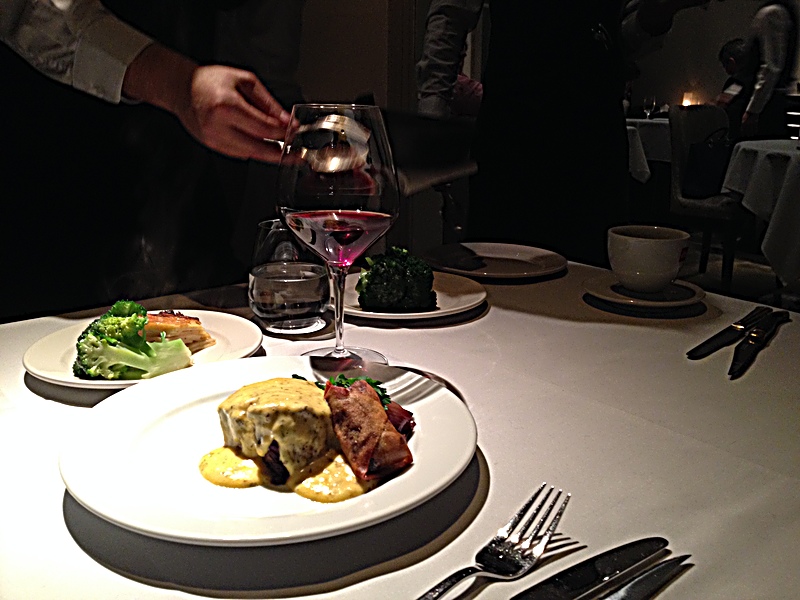
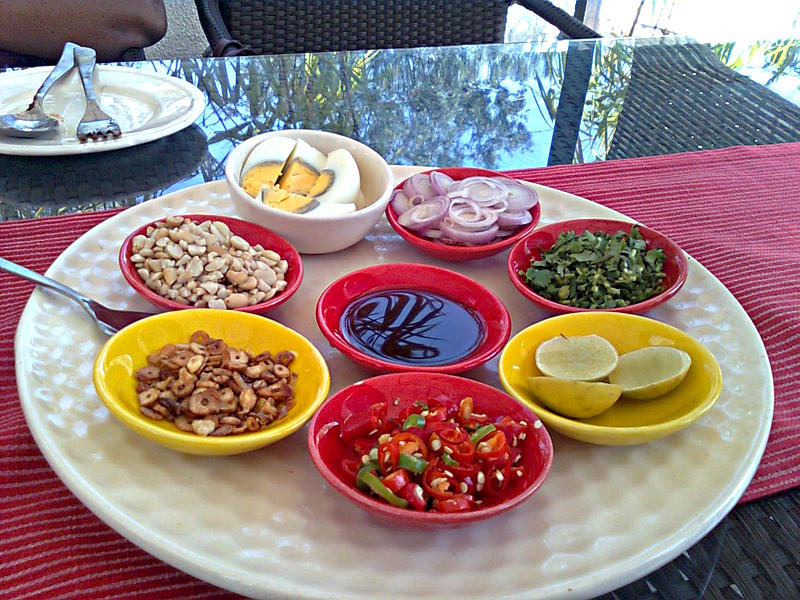
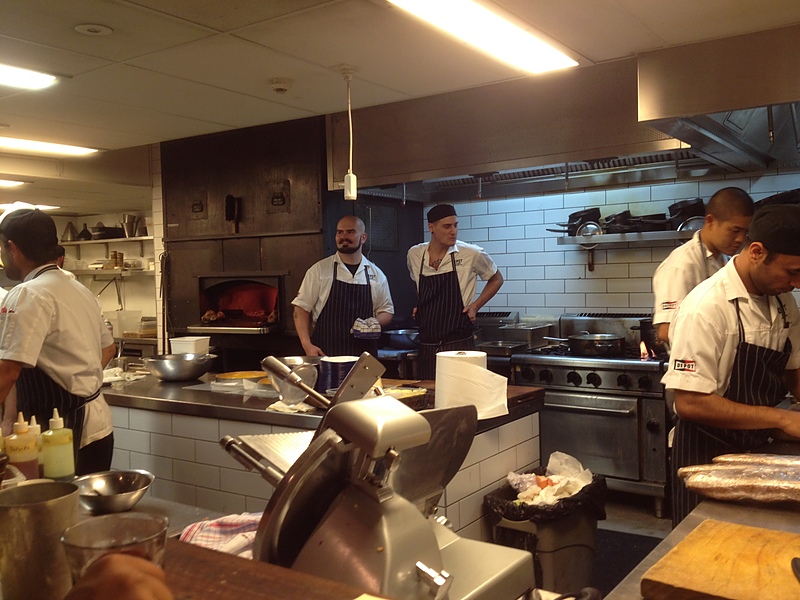
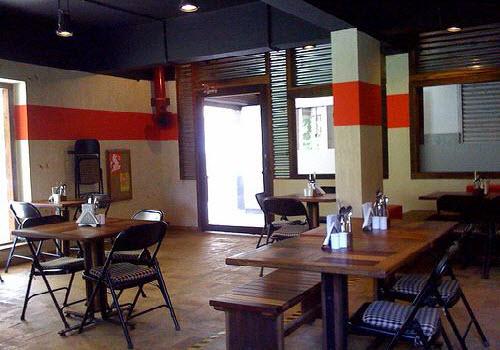
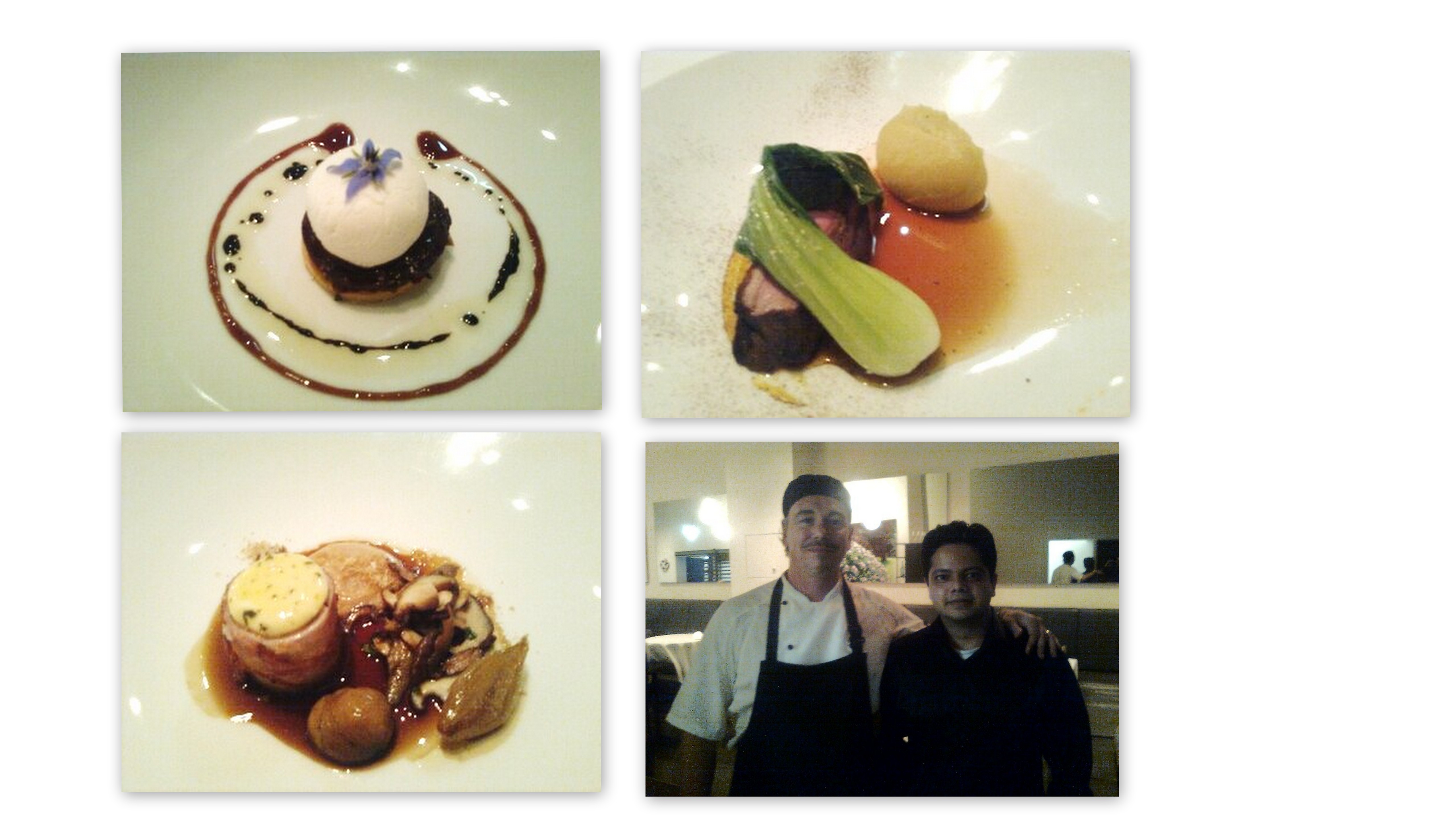
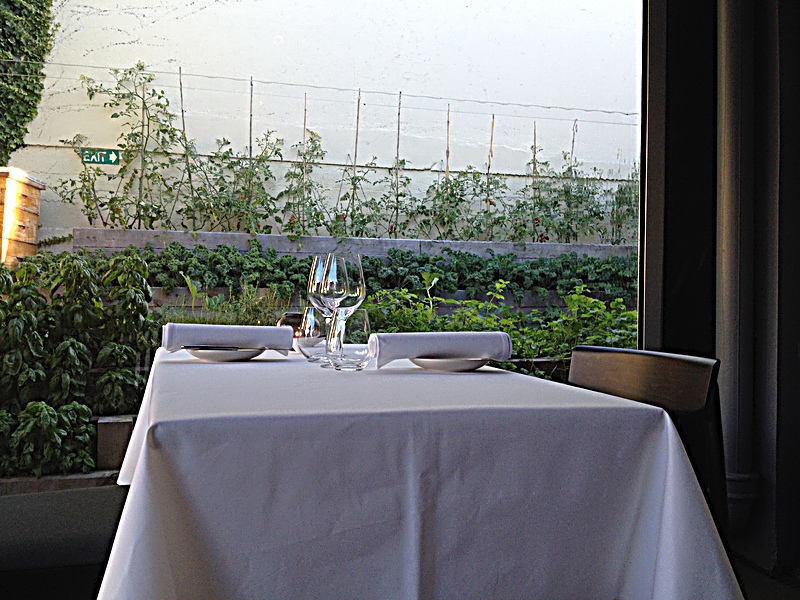
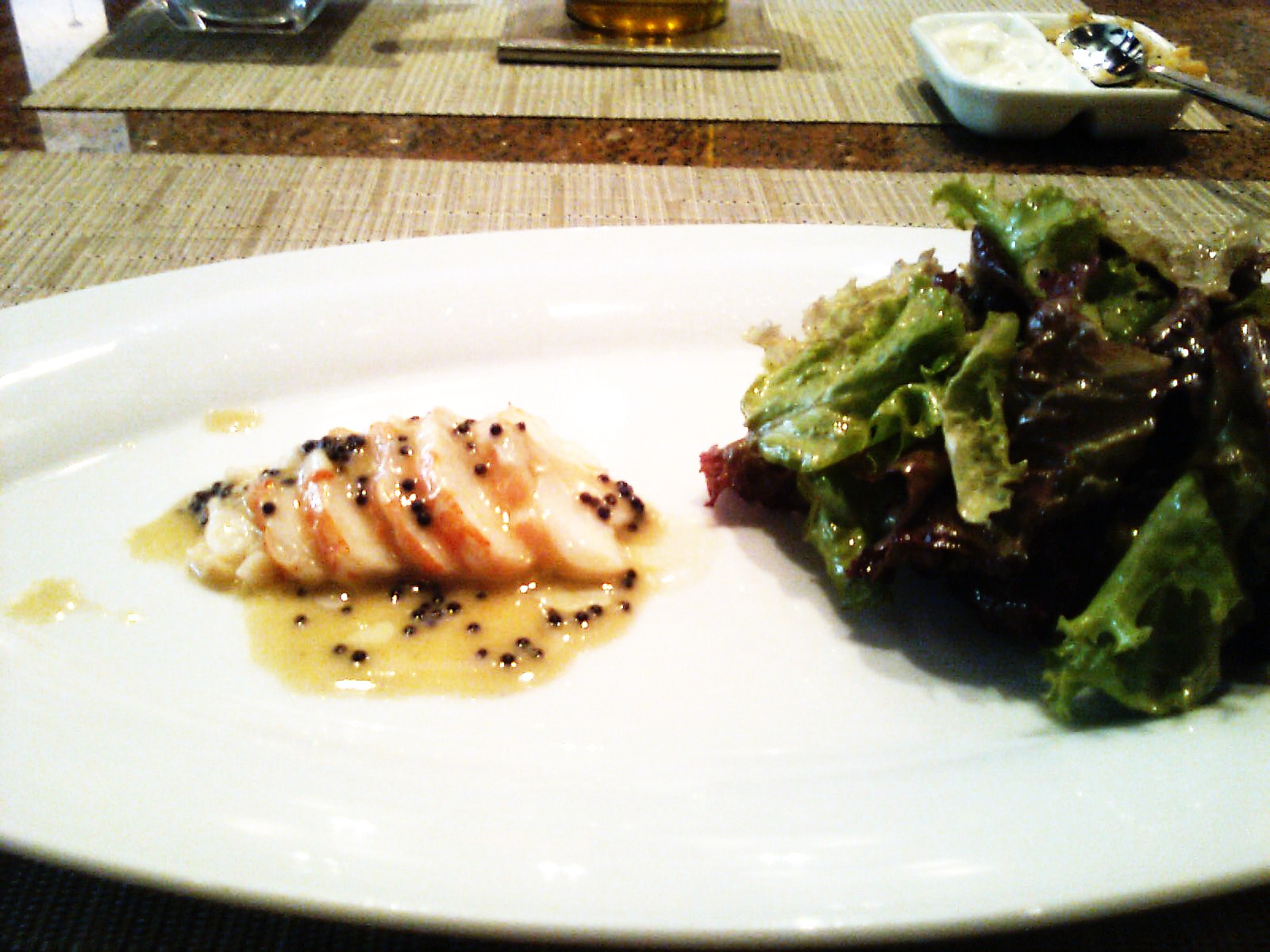
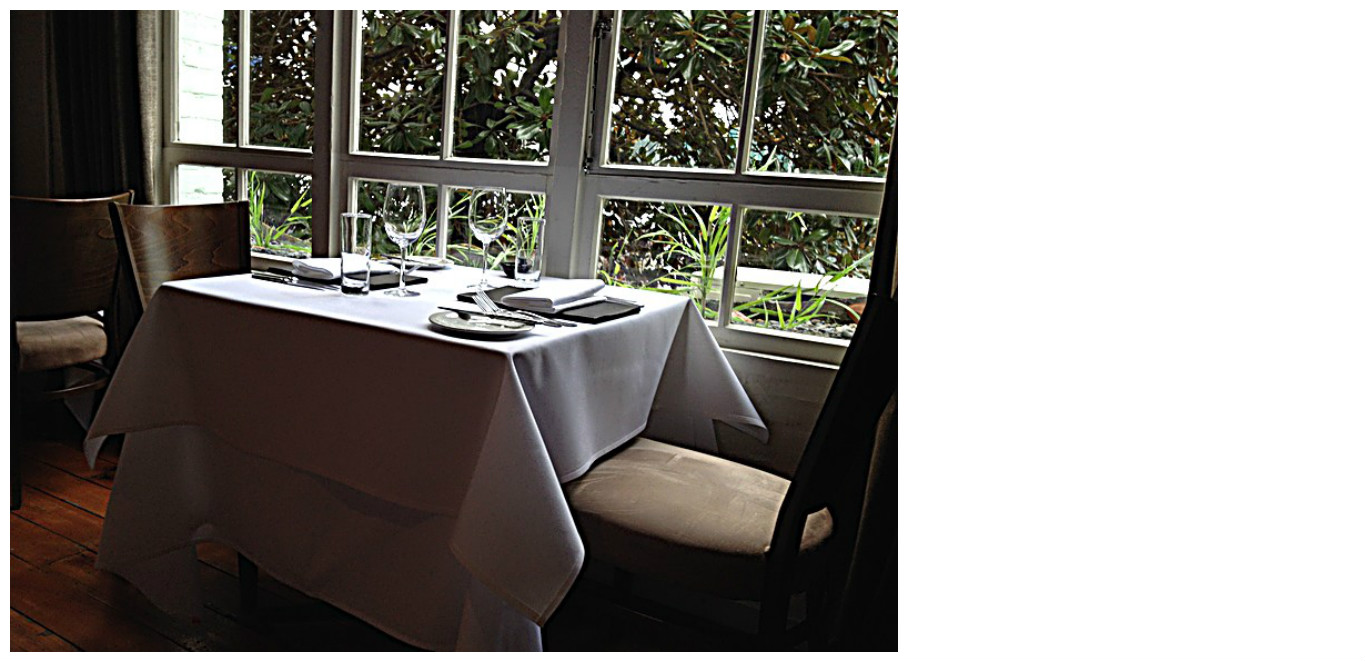
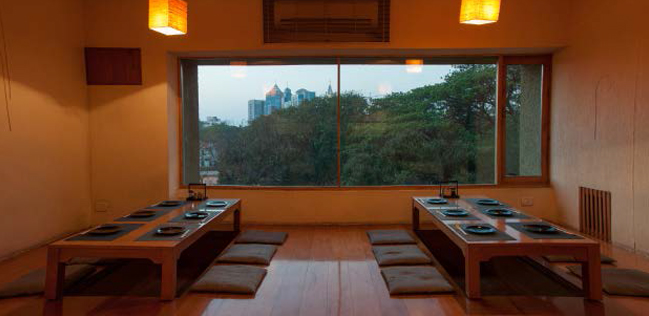
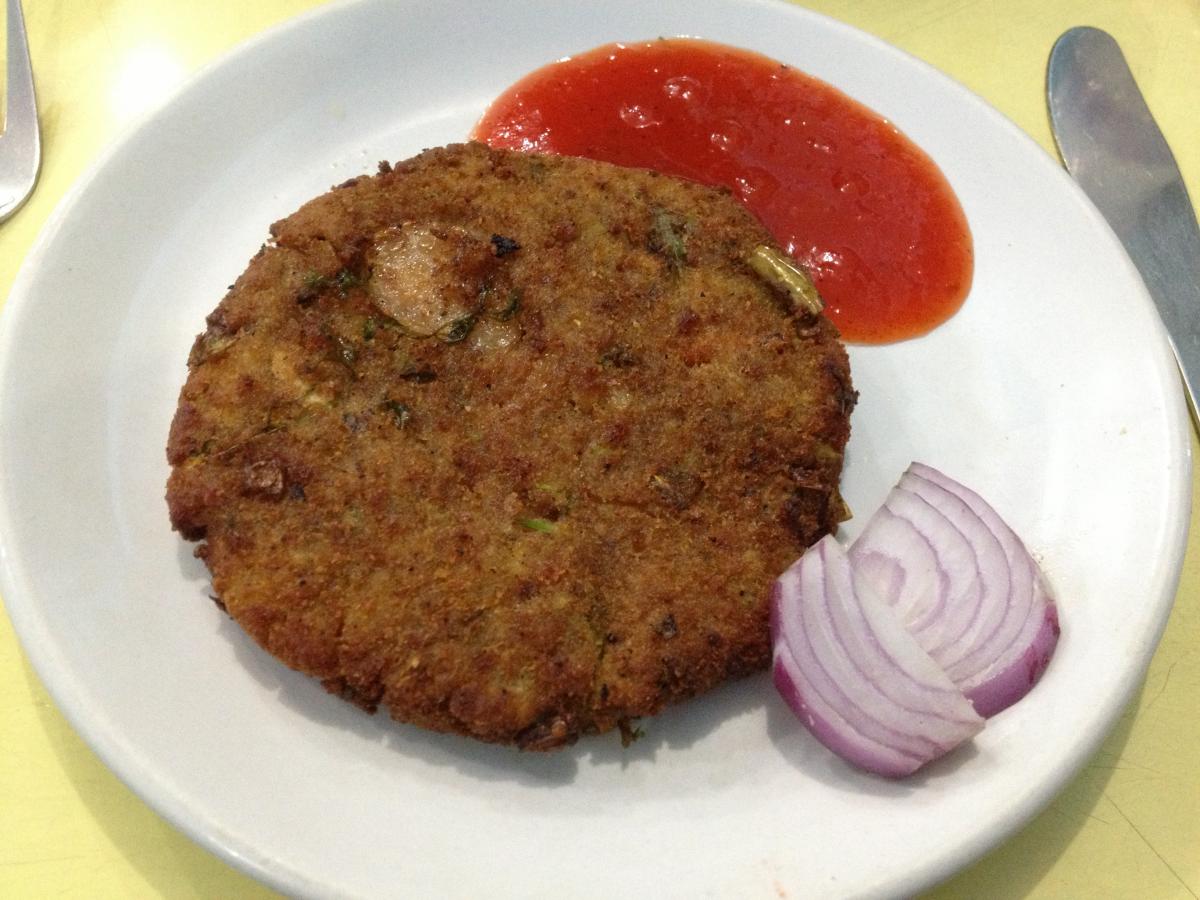
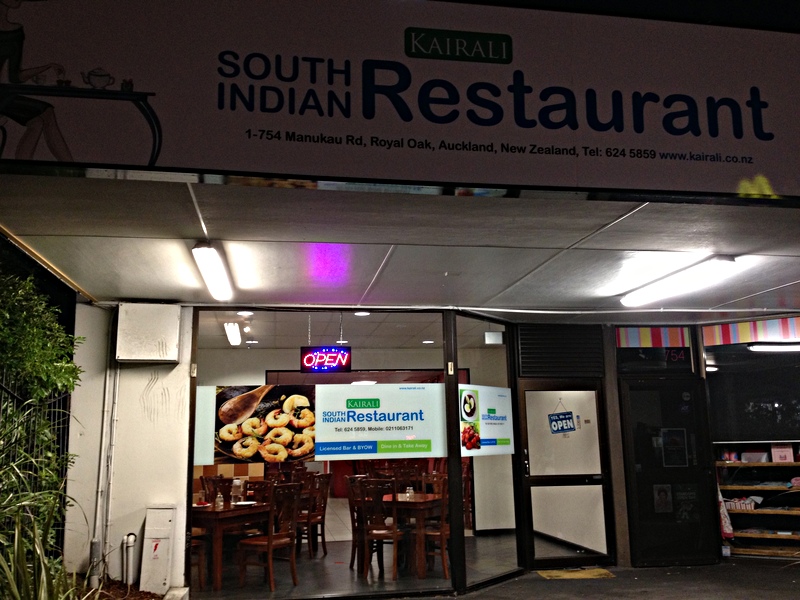
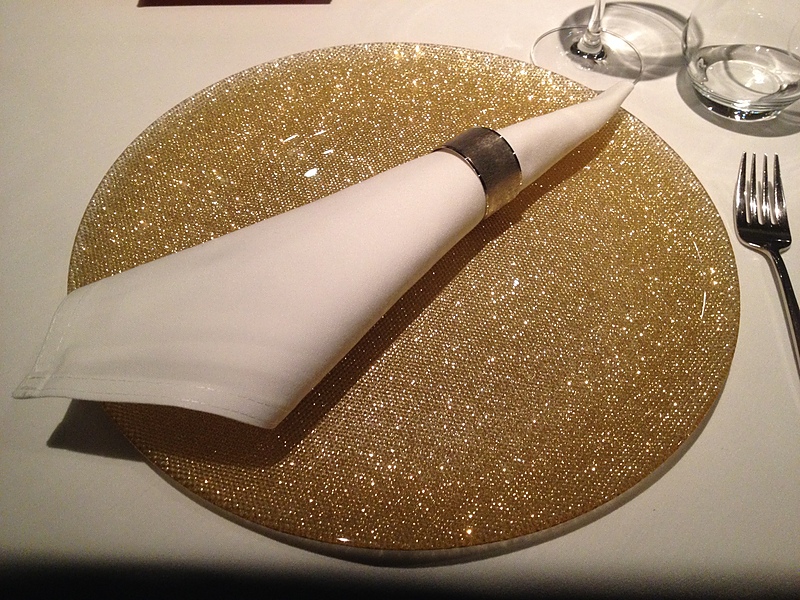
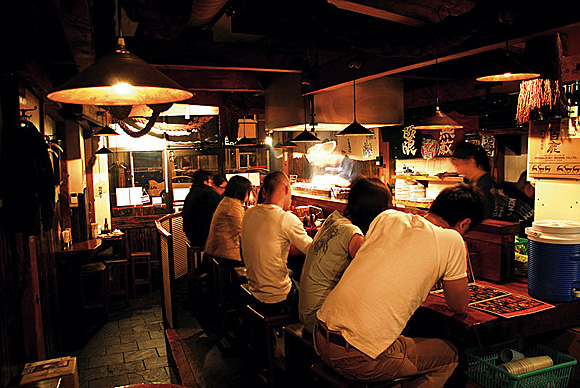
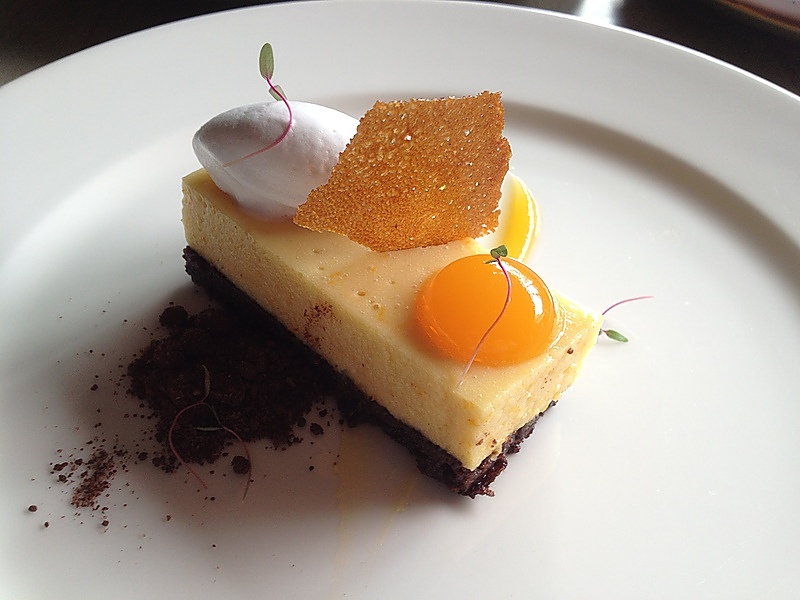

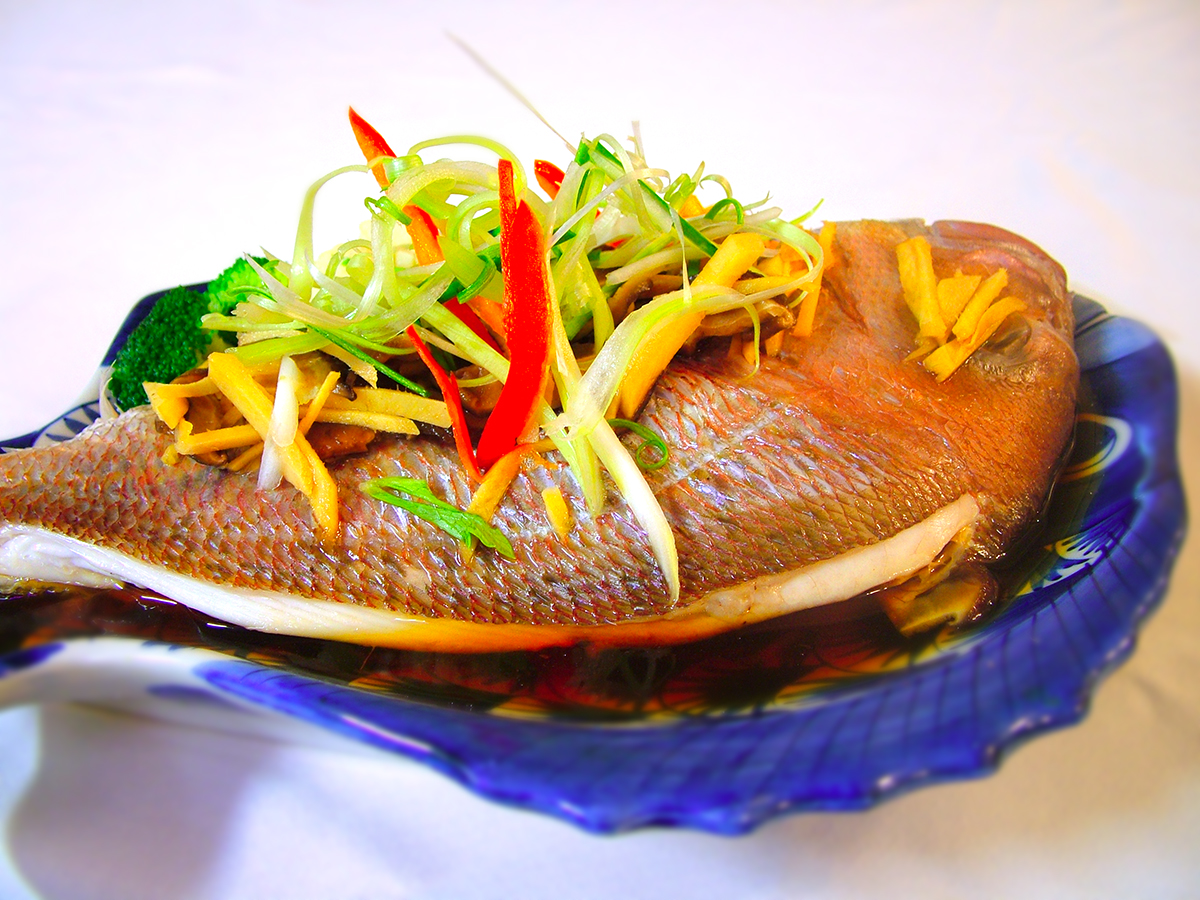
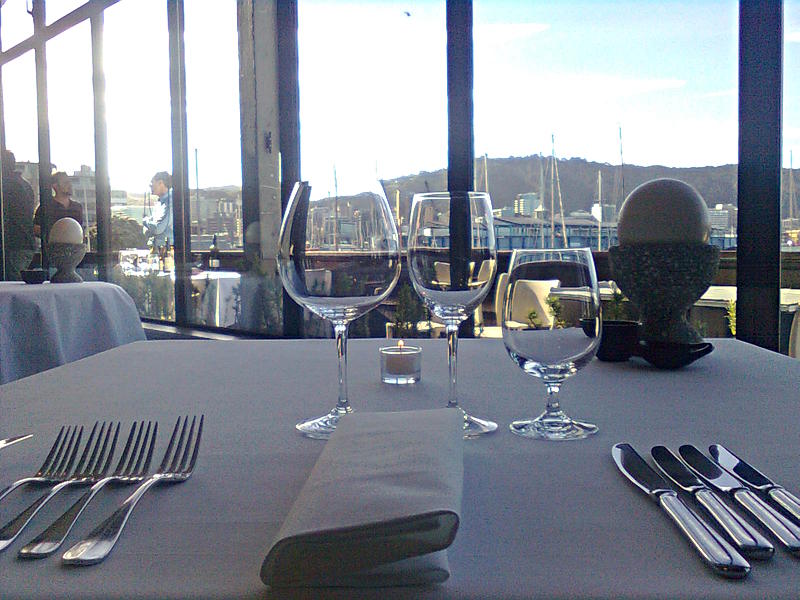
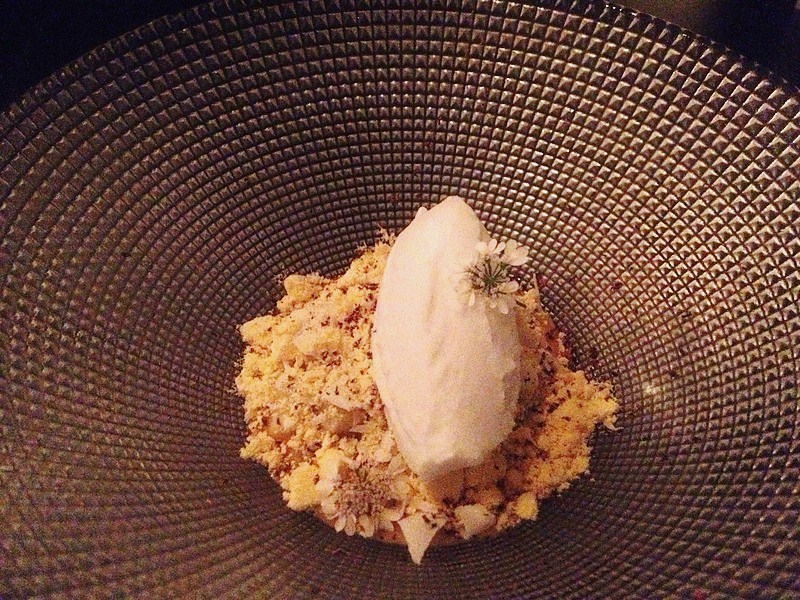
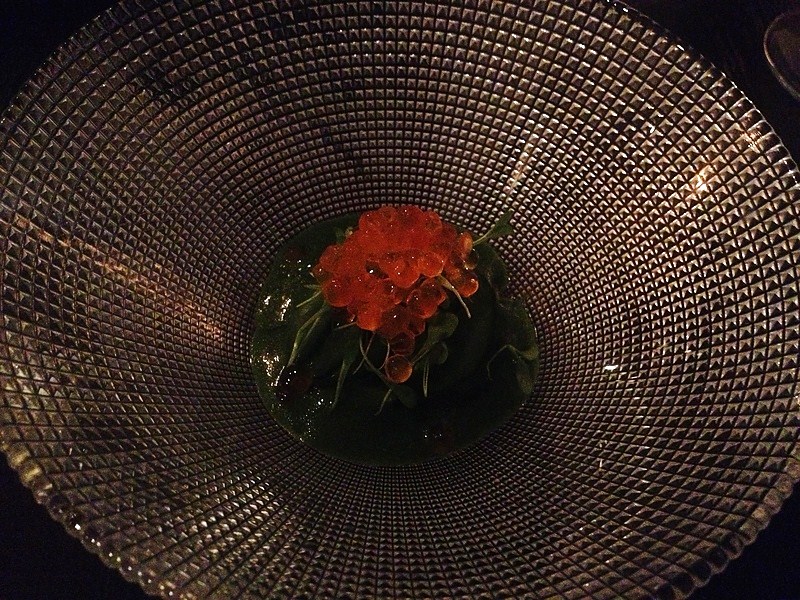
.jpg)

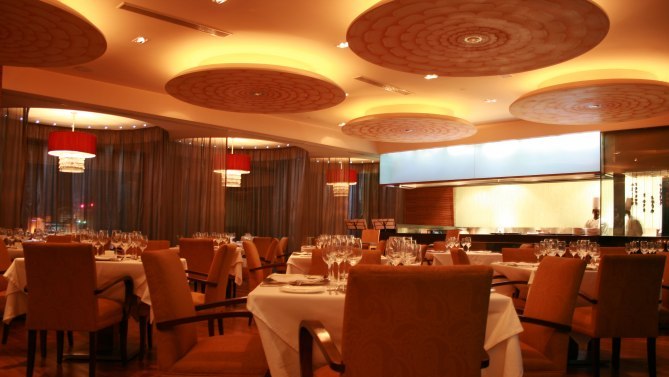


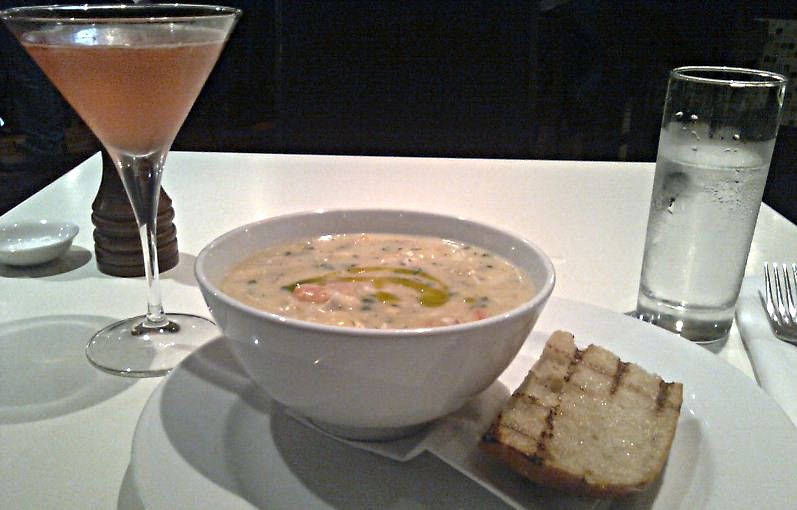
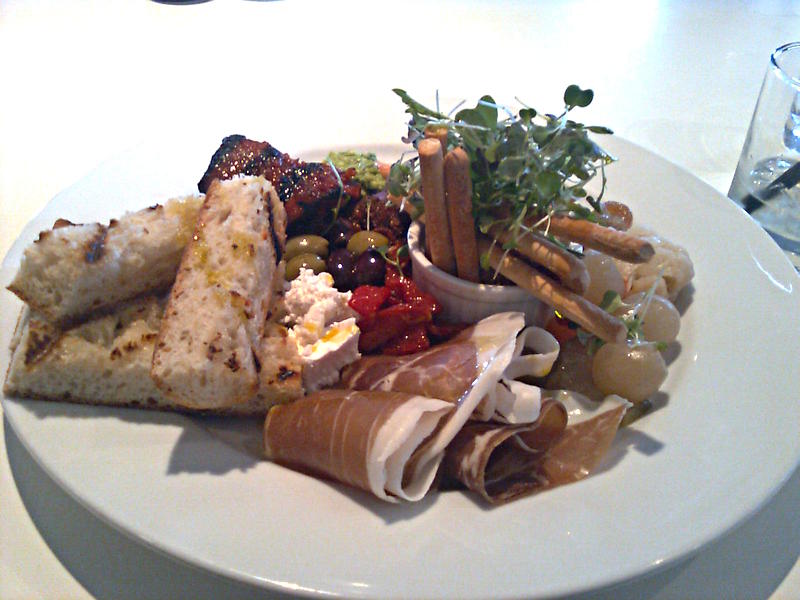
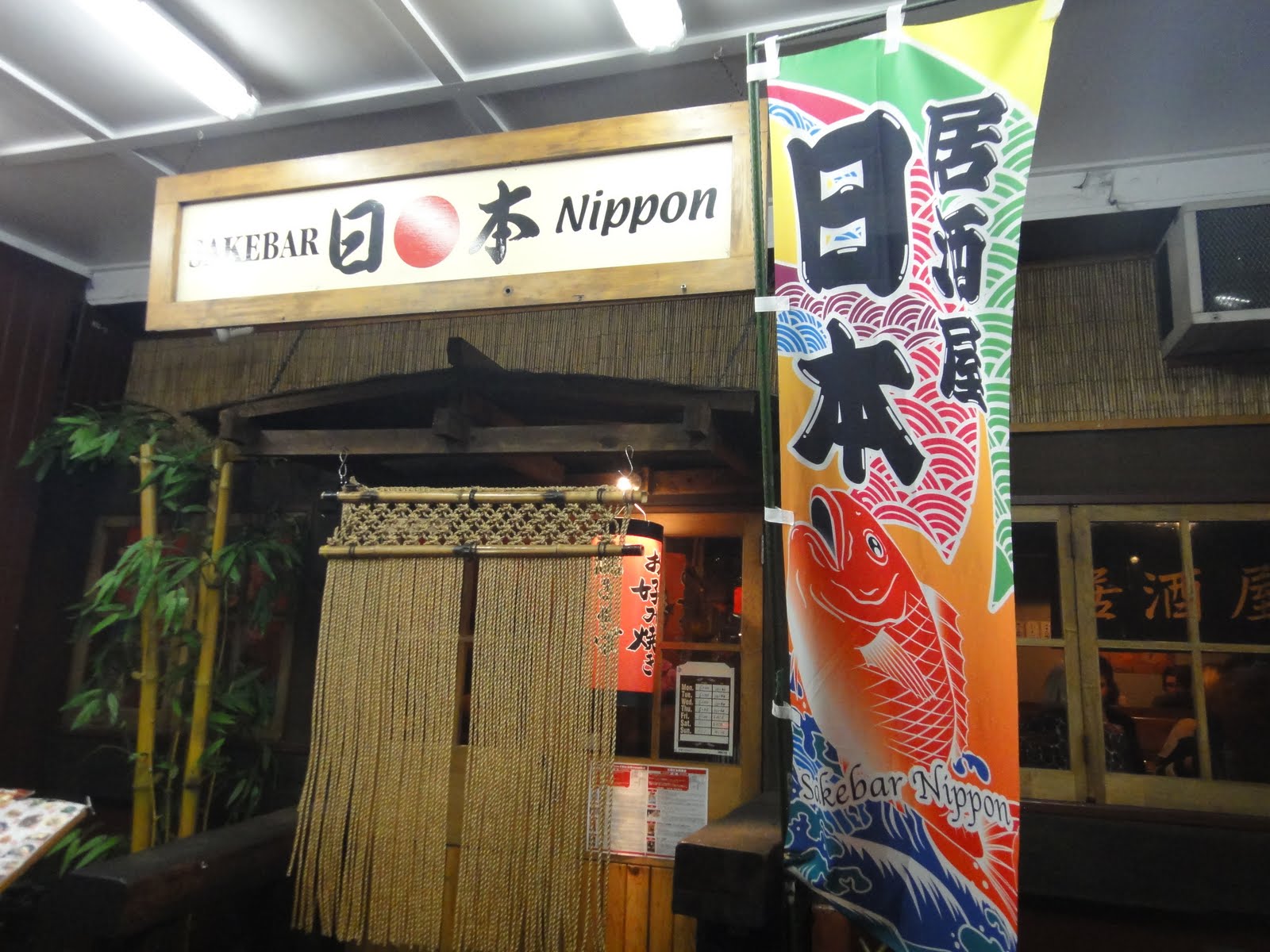
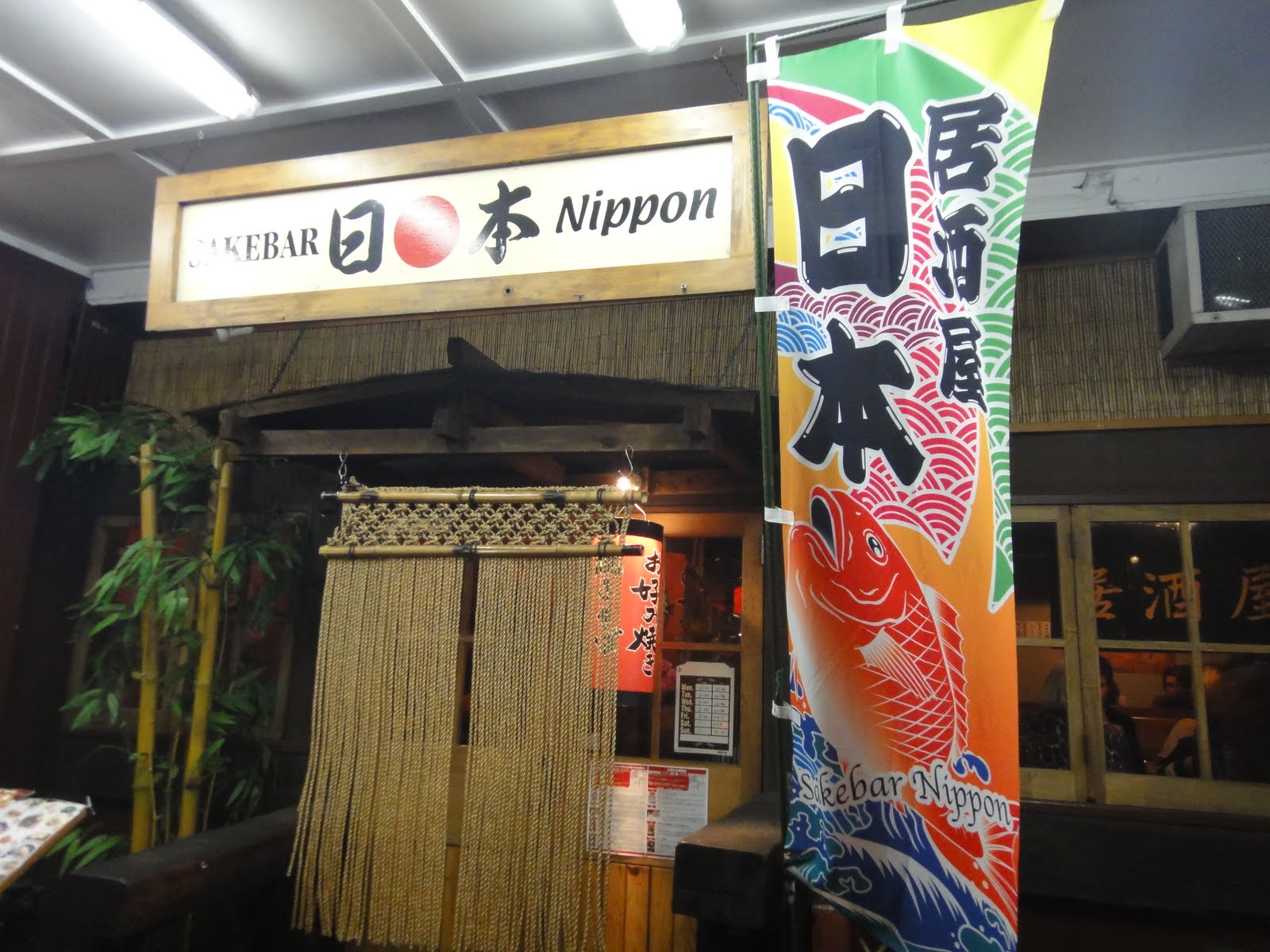
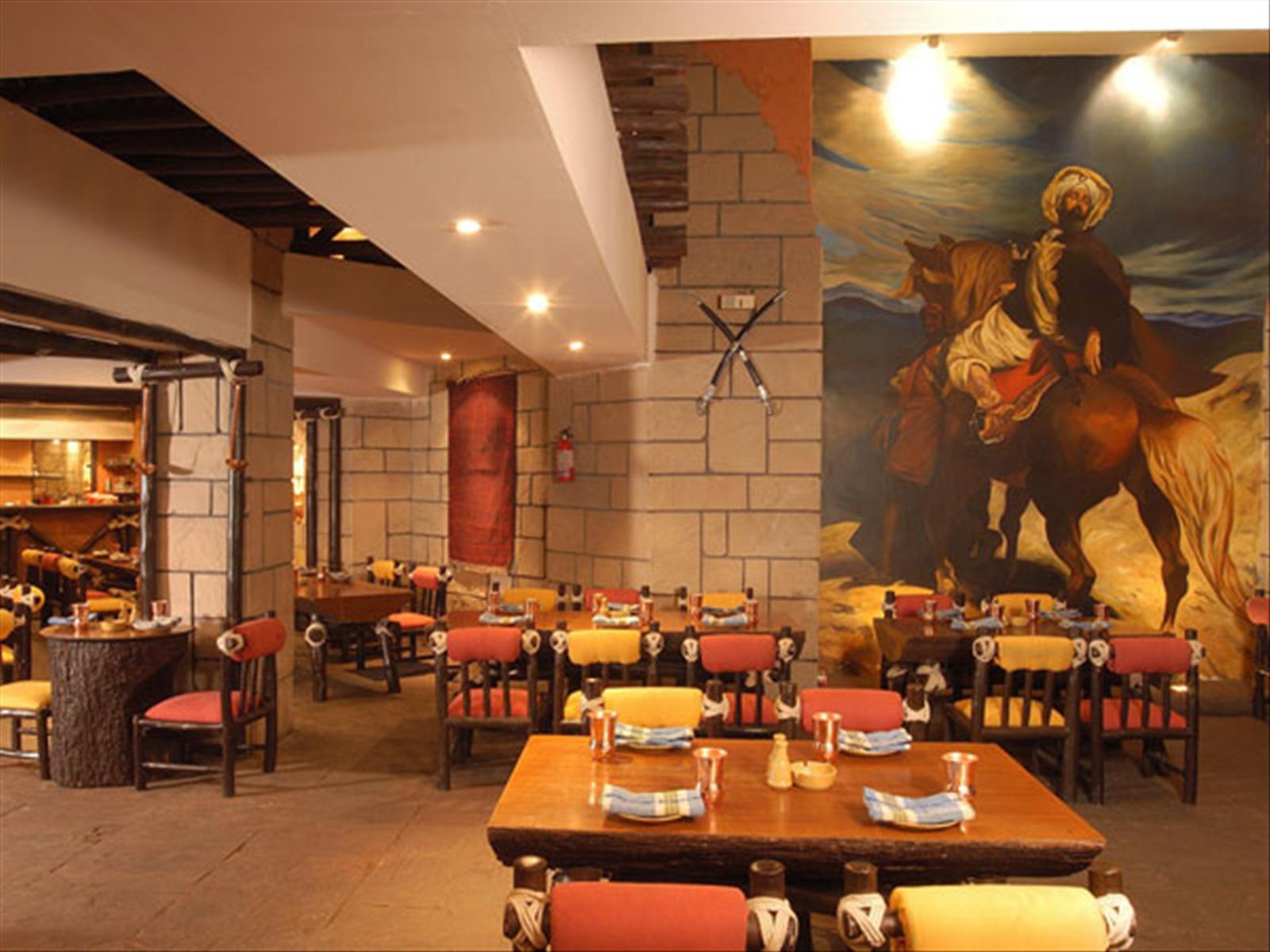
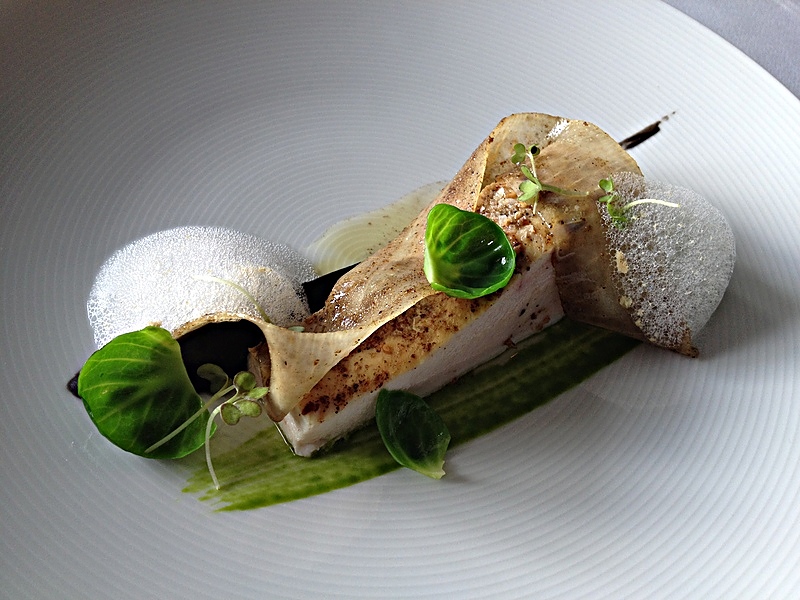
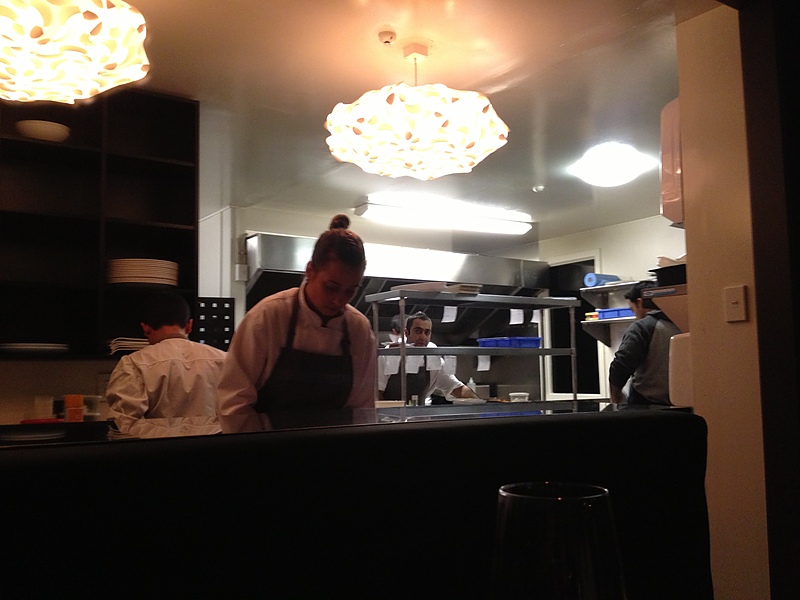
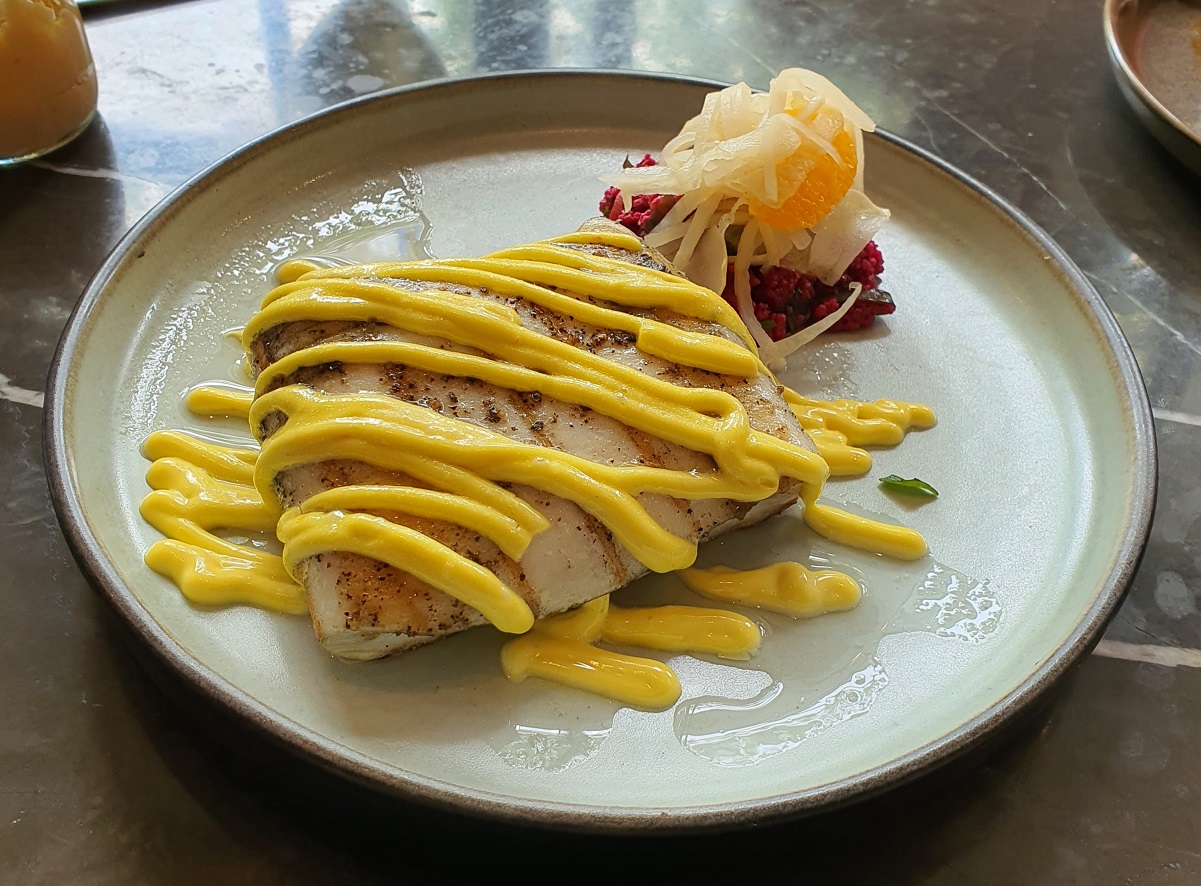
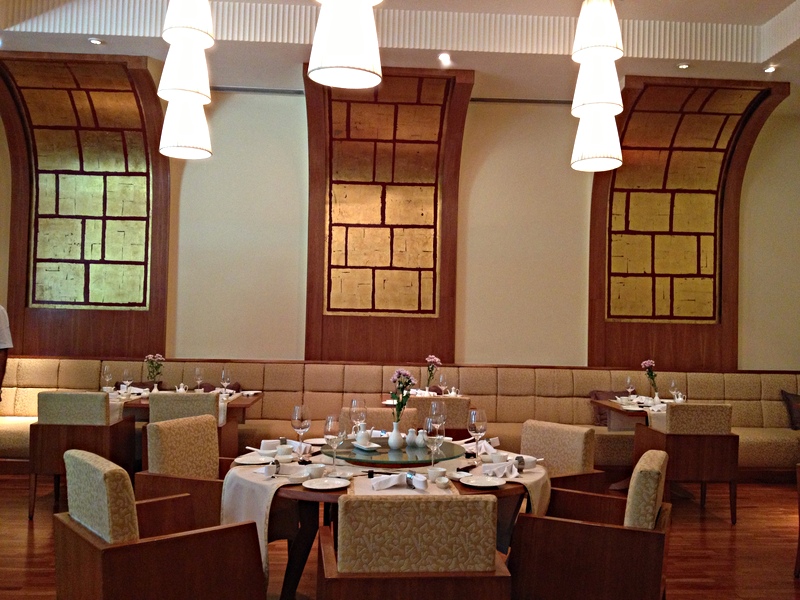
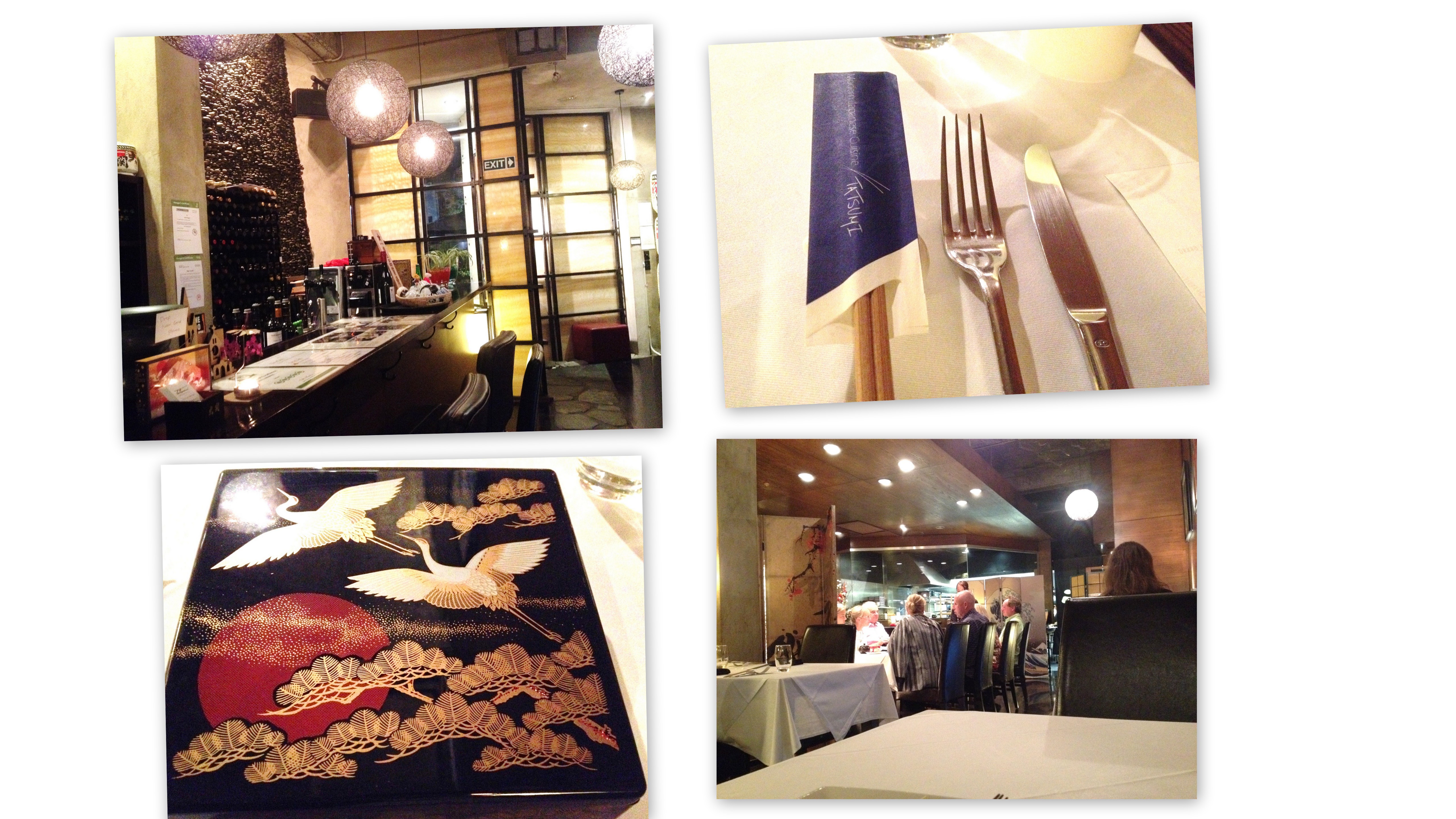
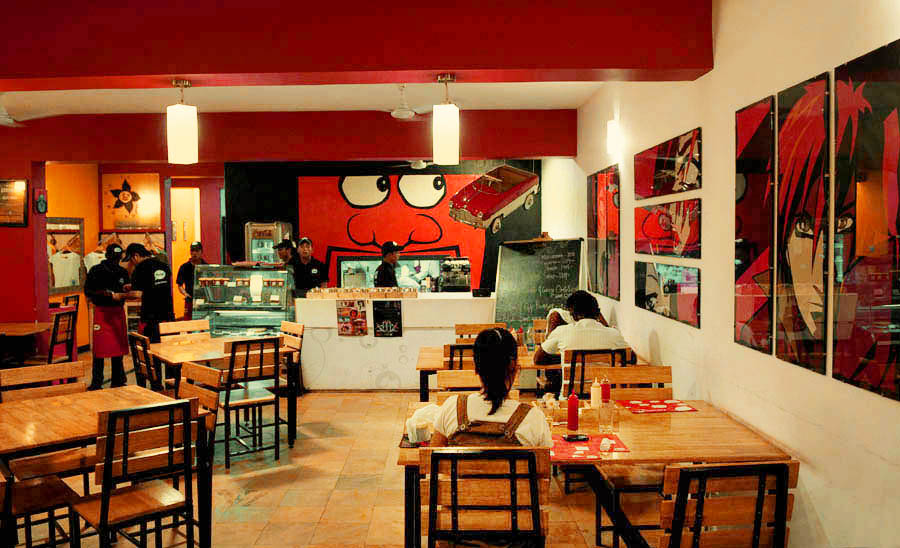


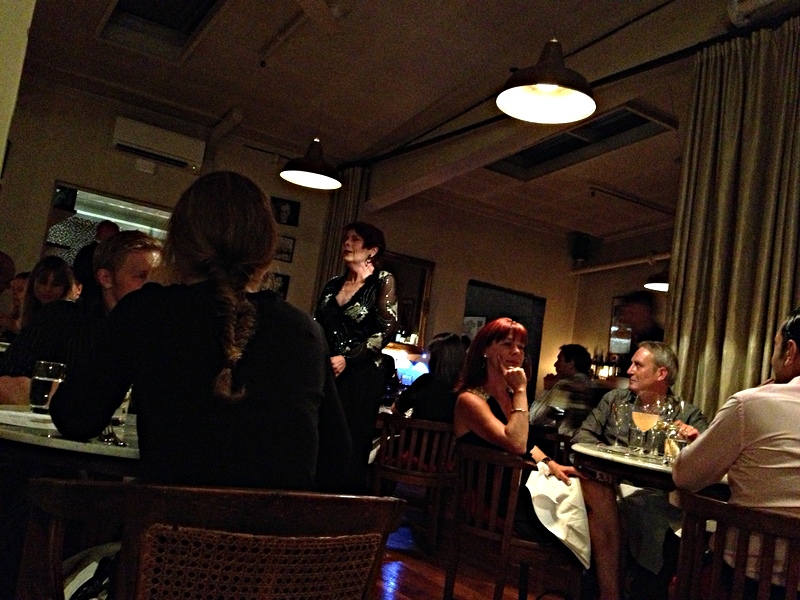
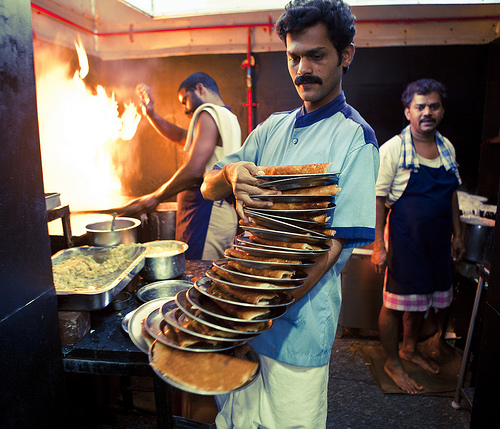
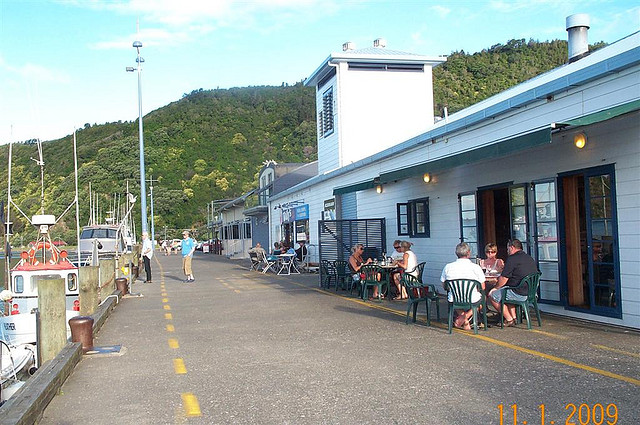

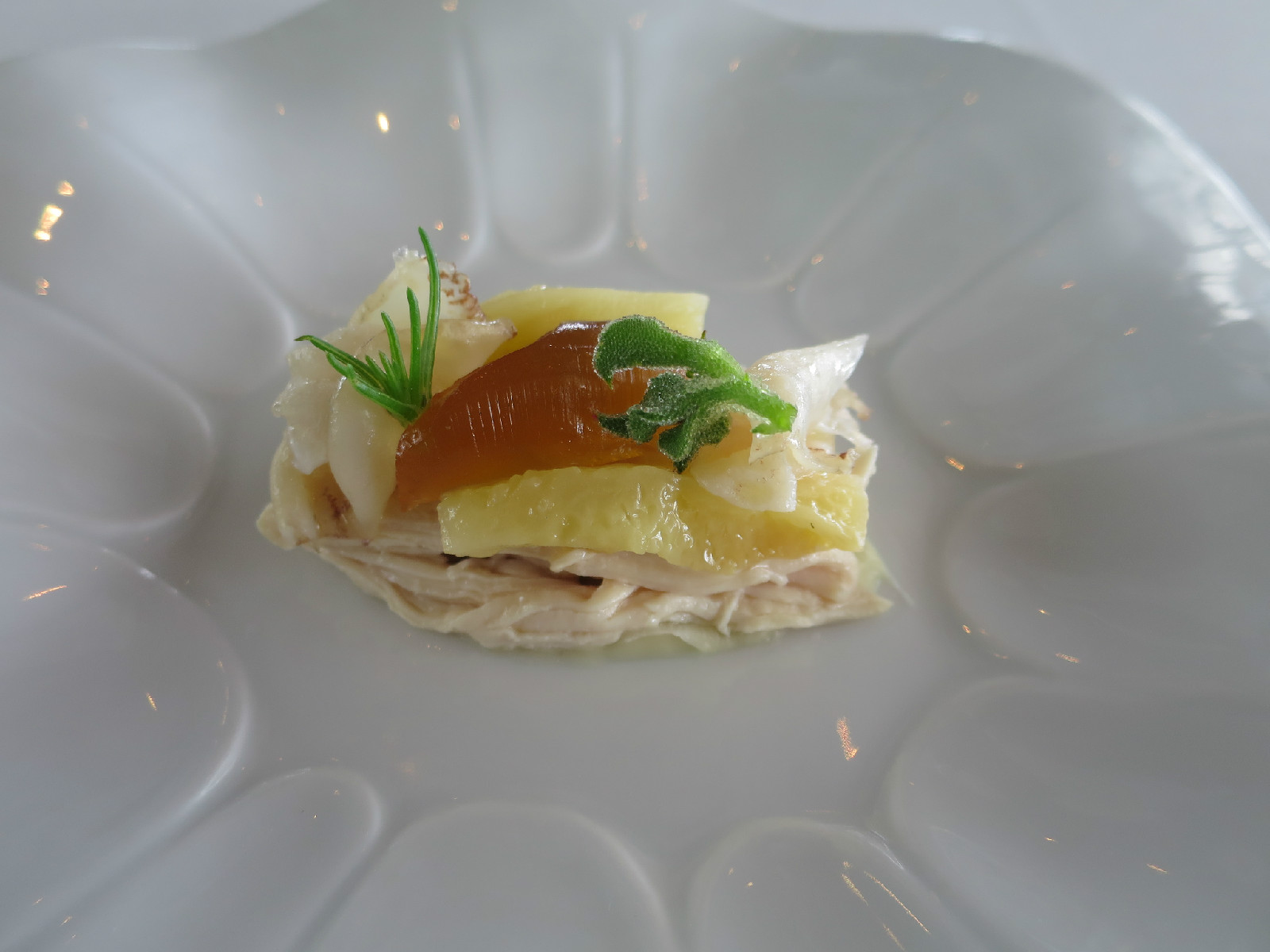
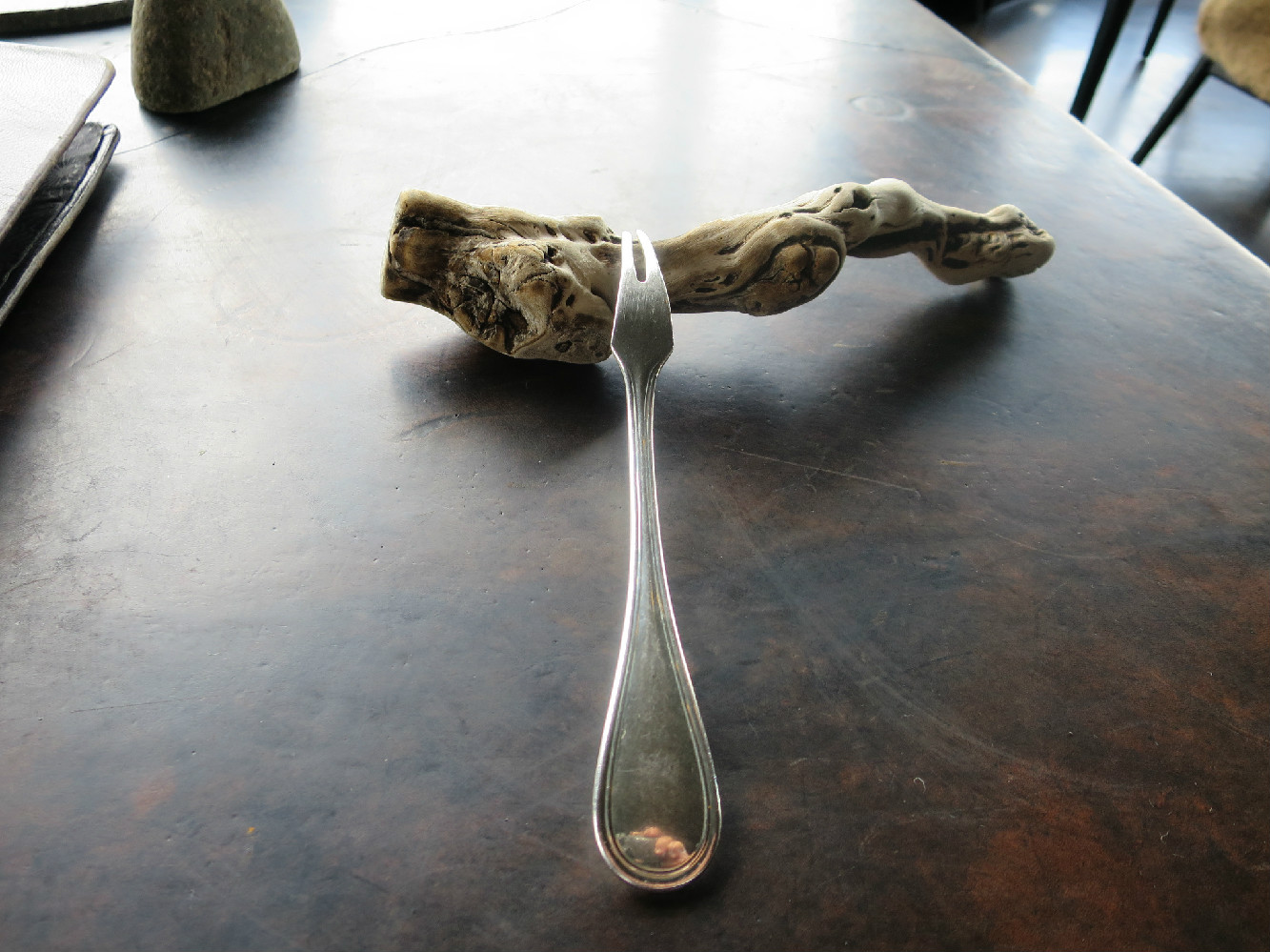
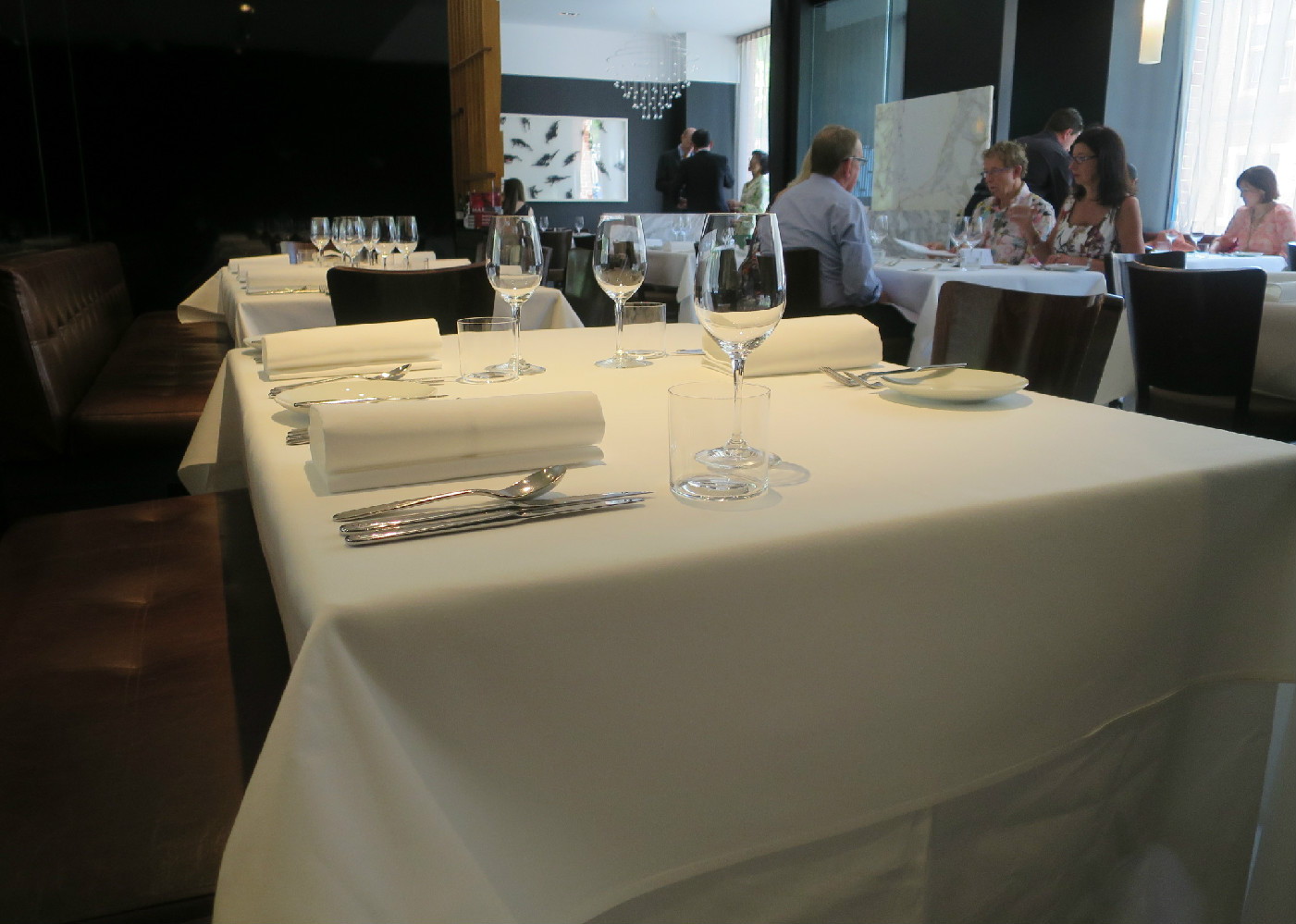
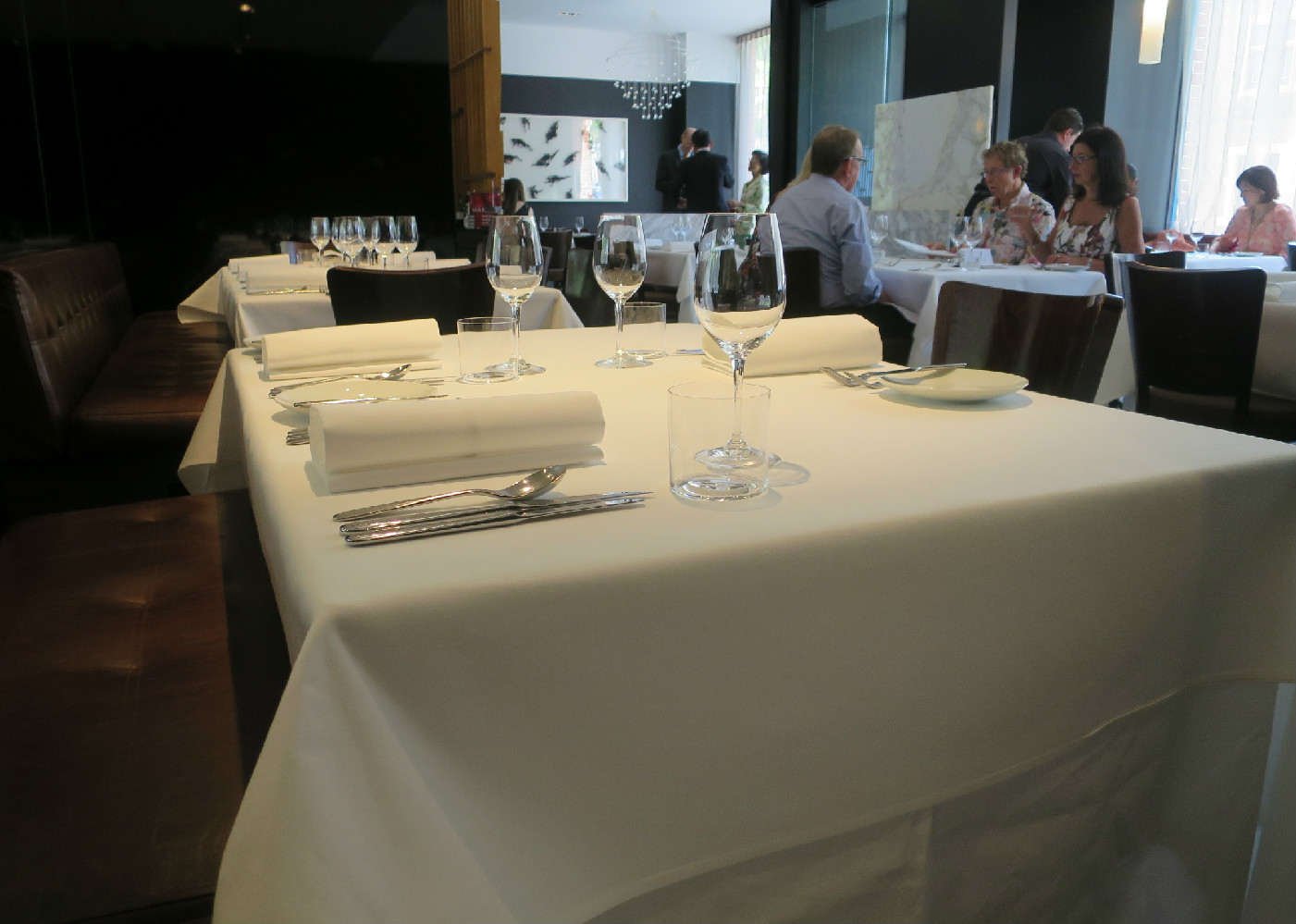 [...]
[...]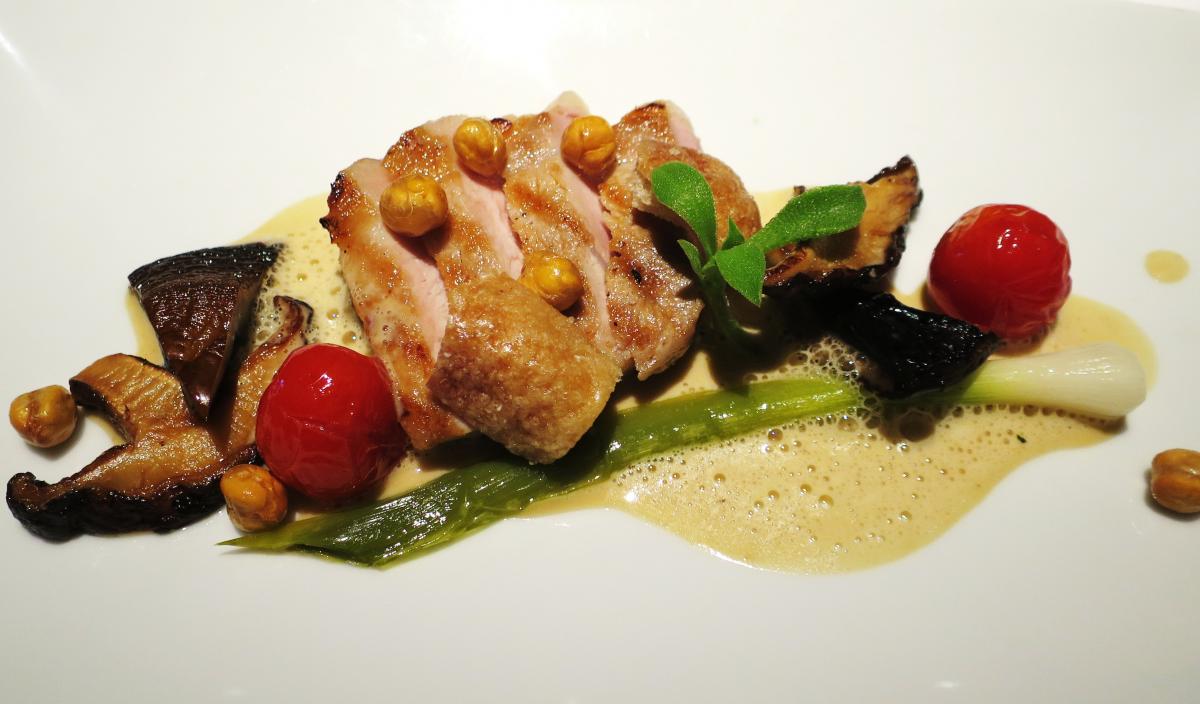
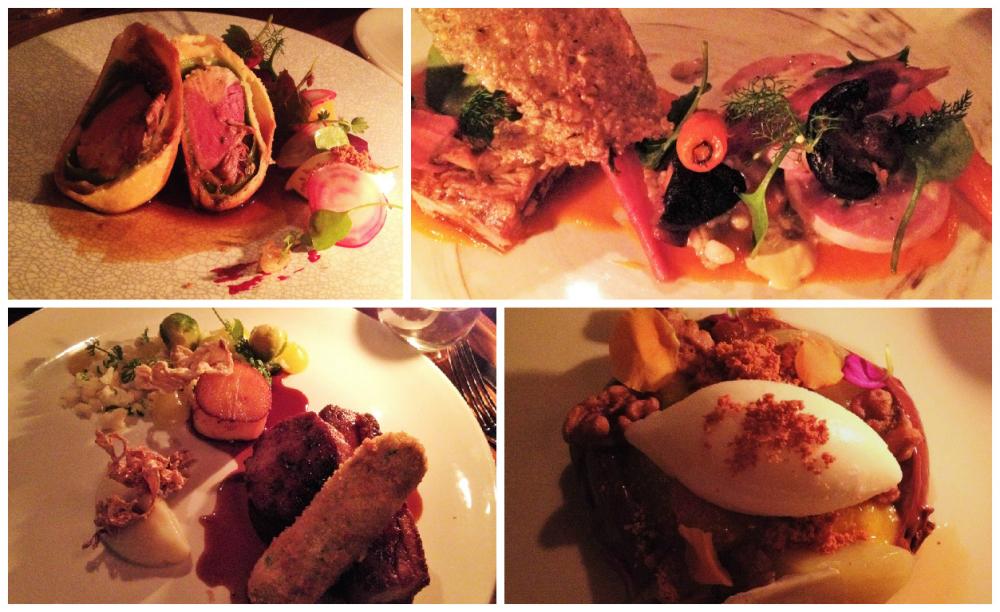
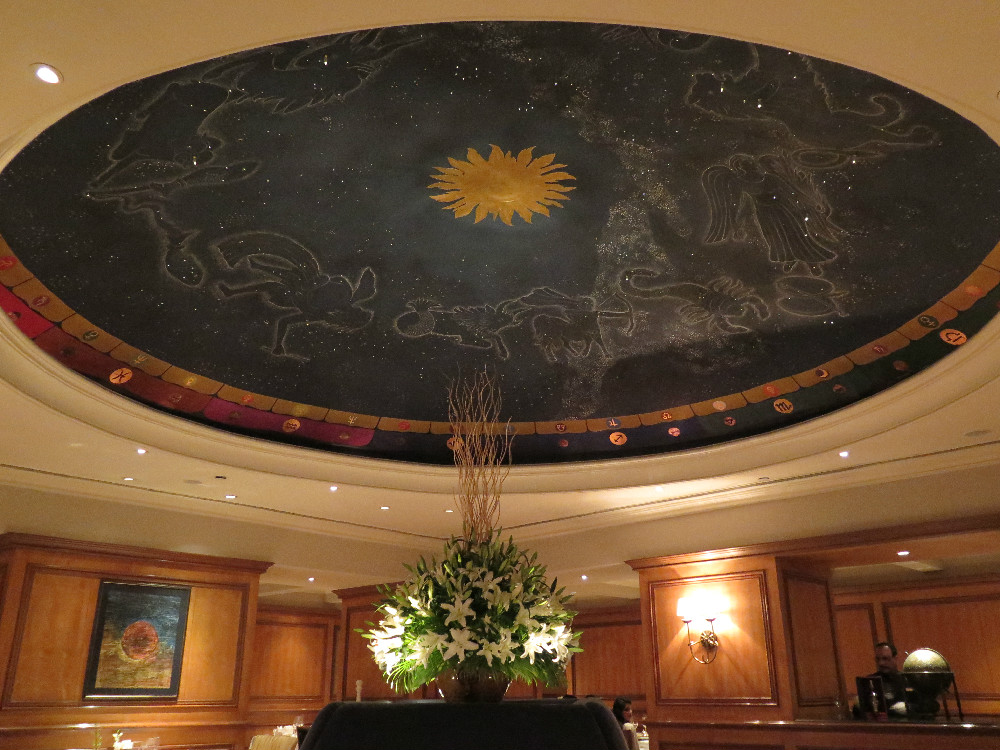
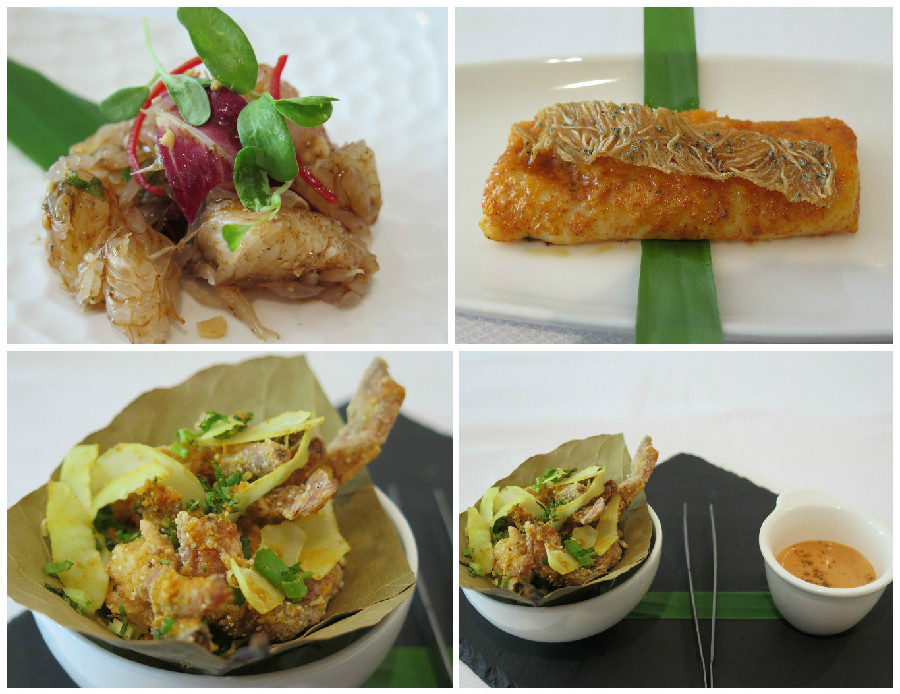
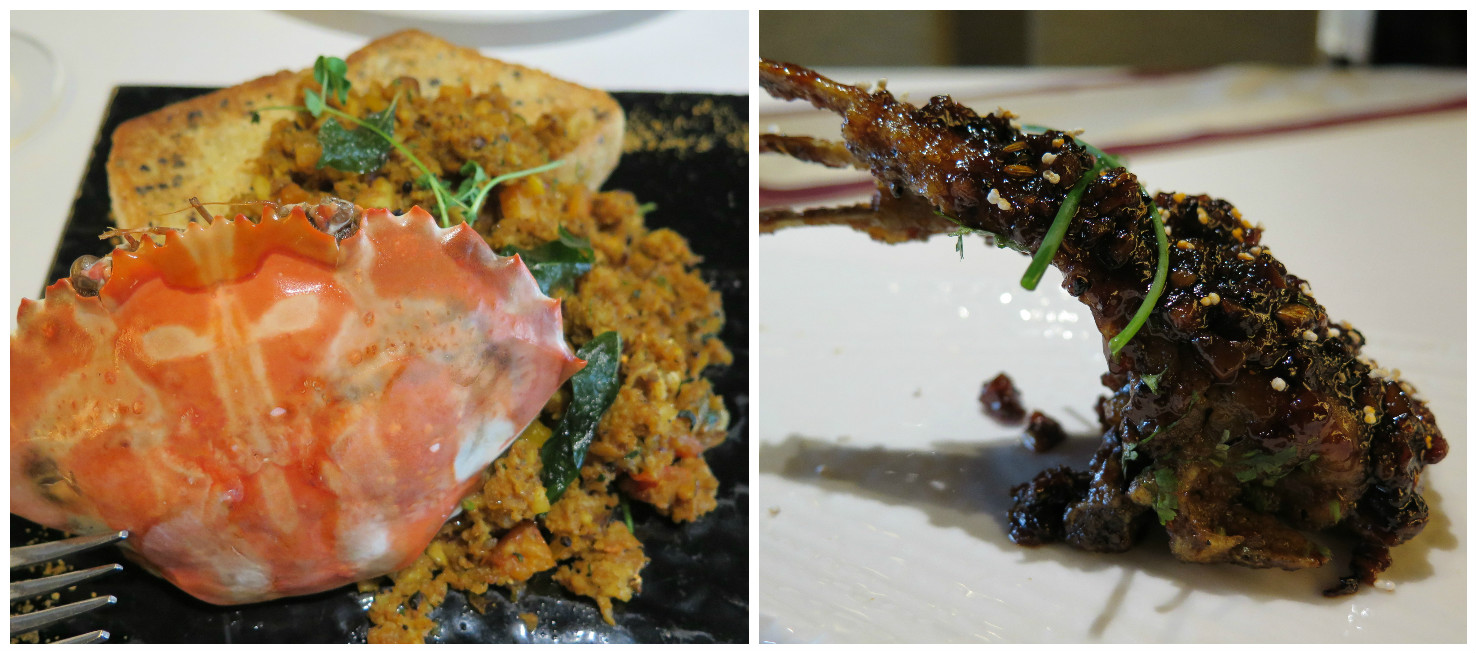
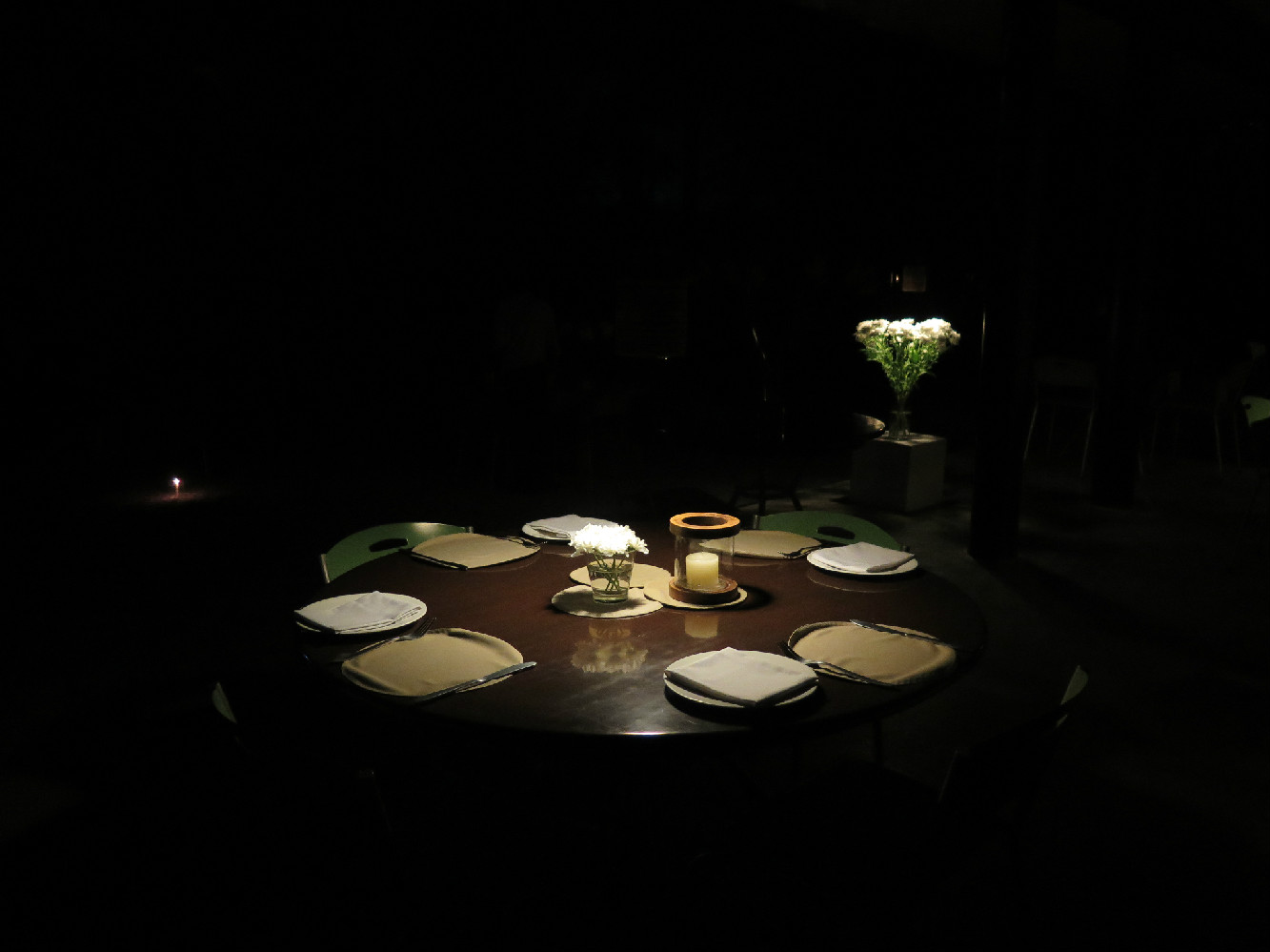
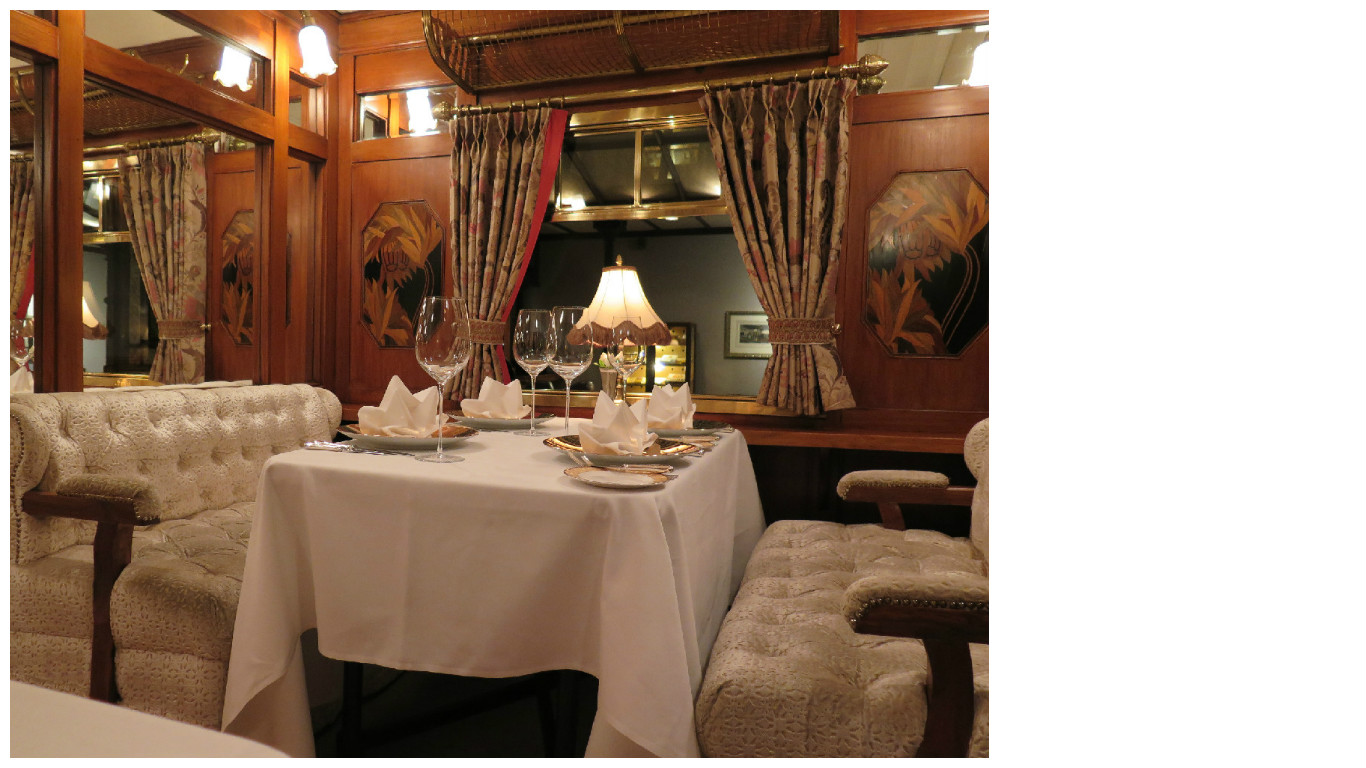
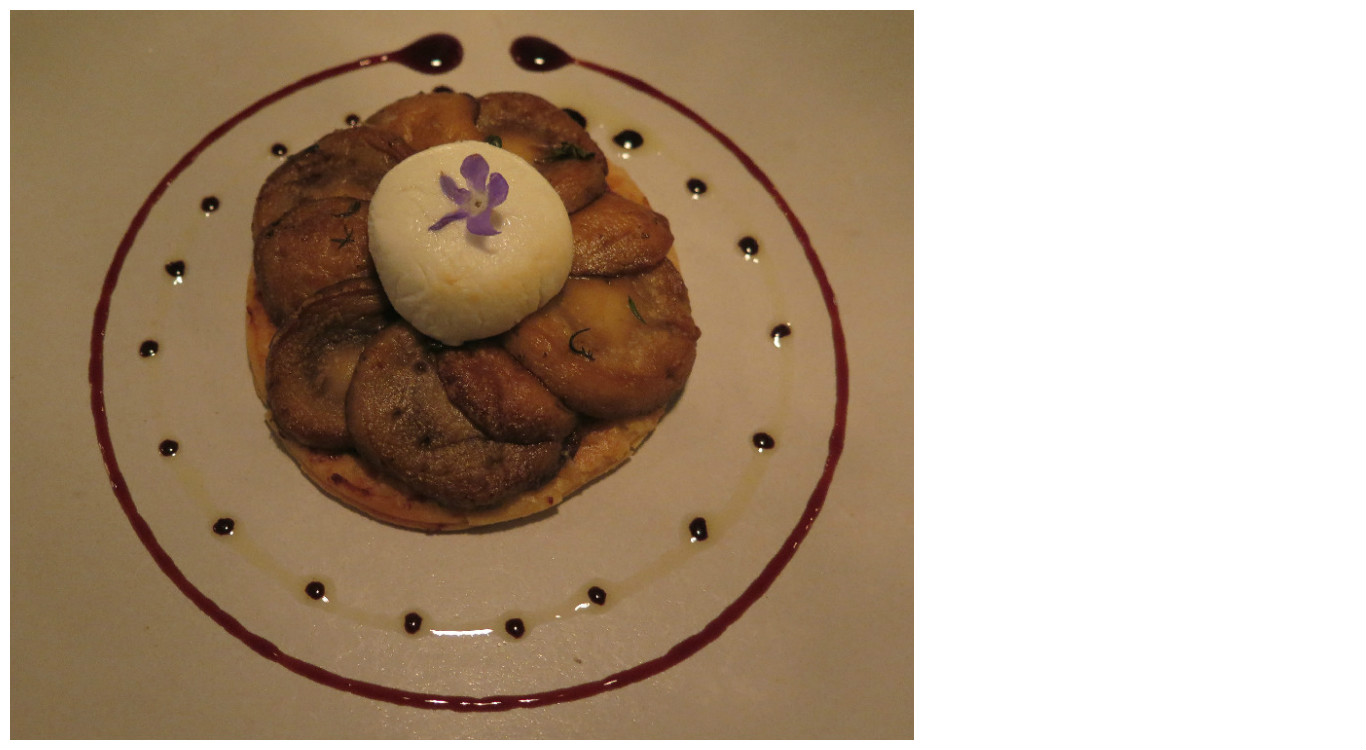
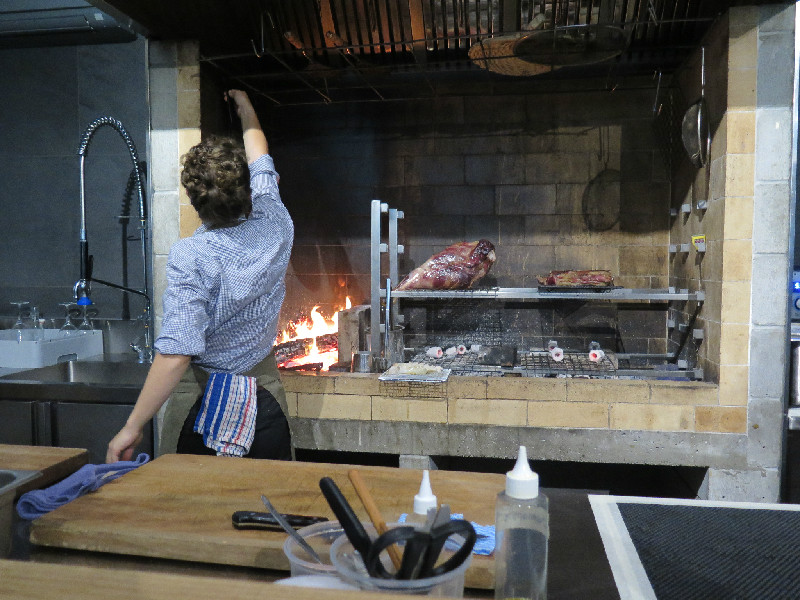
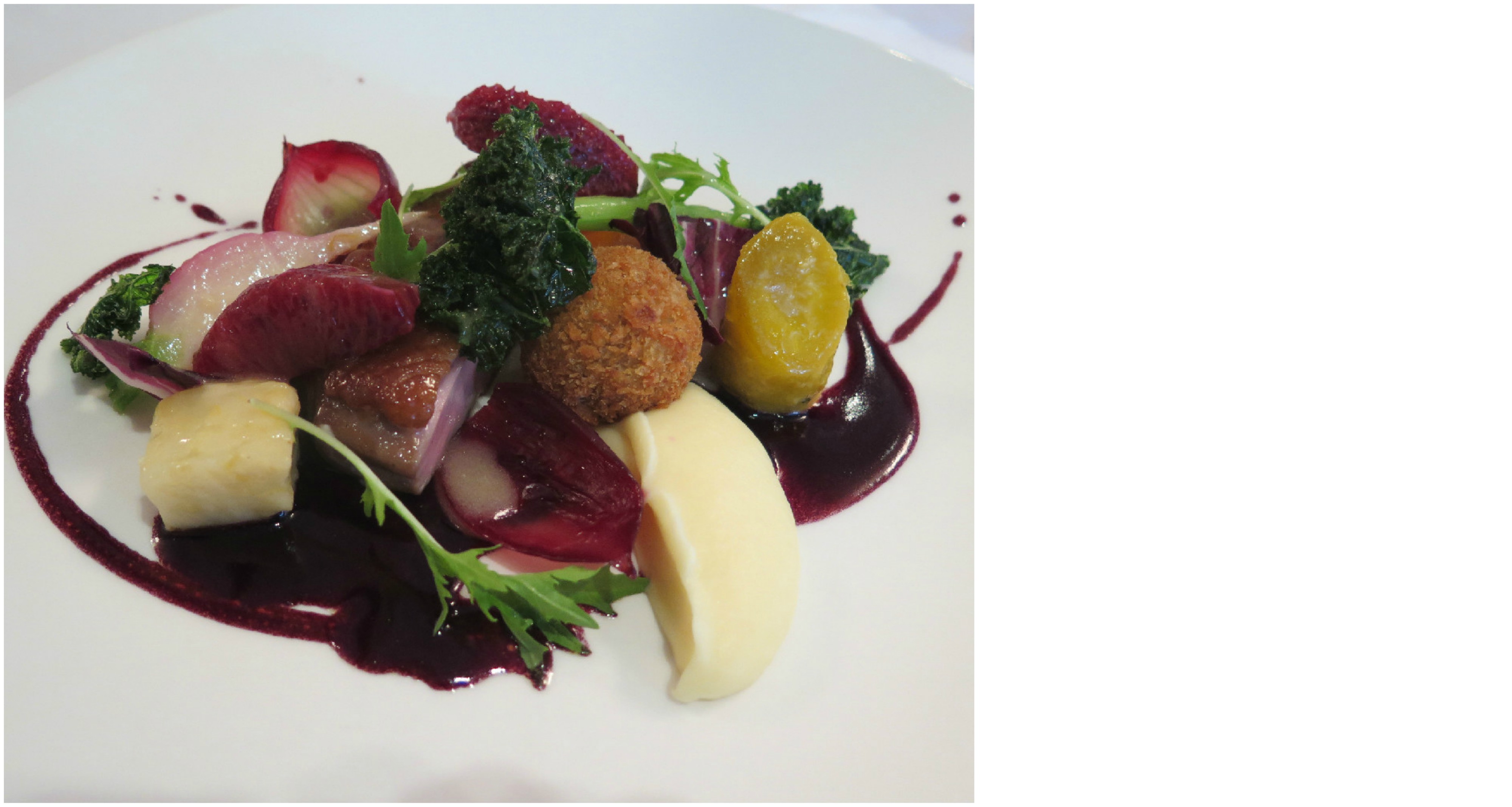

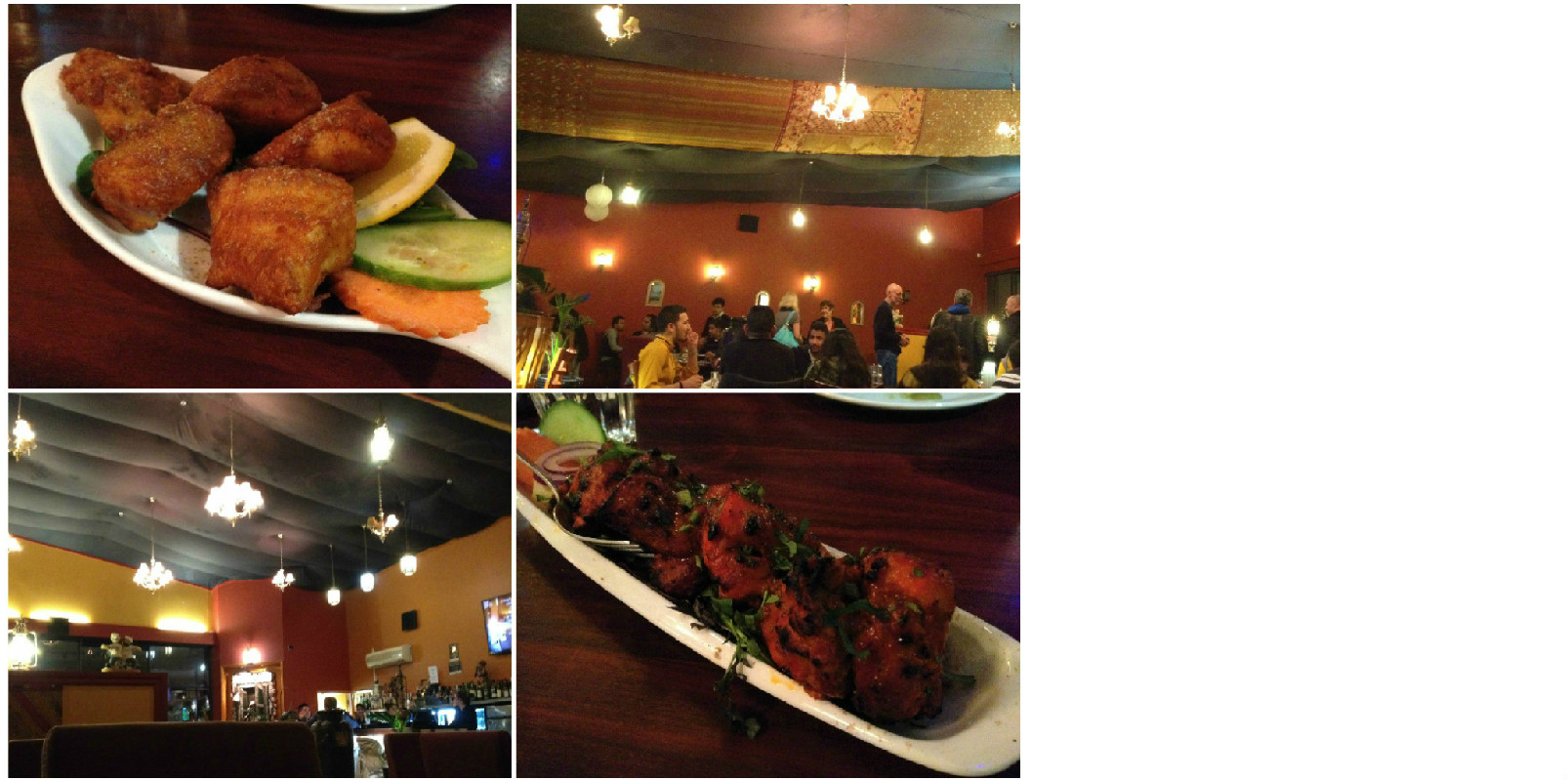
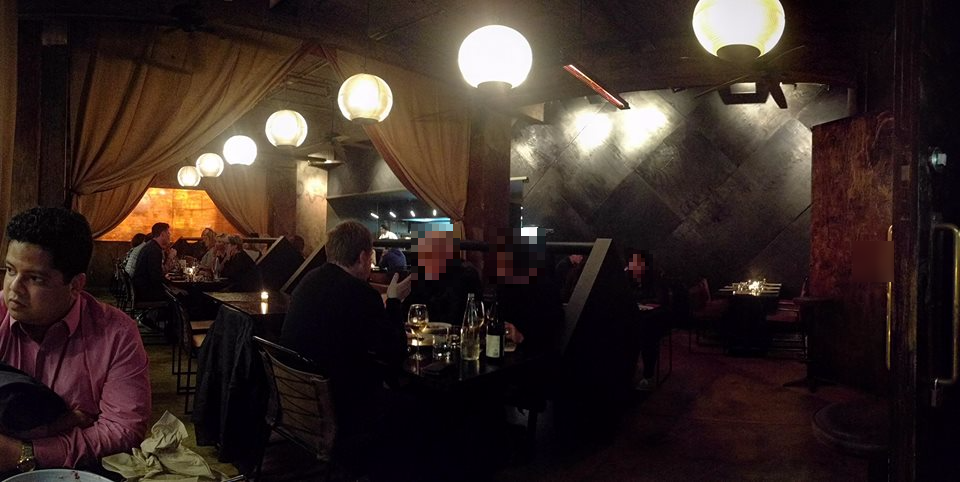
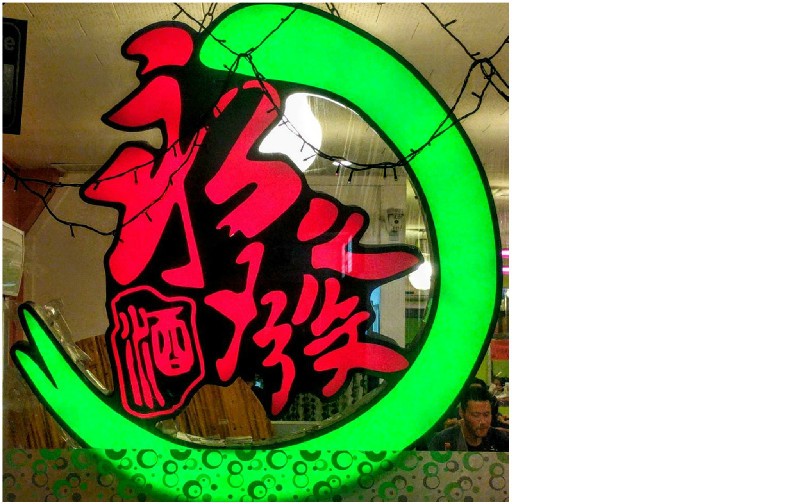



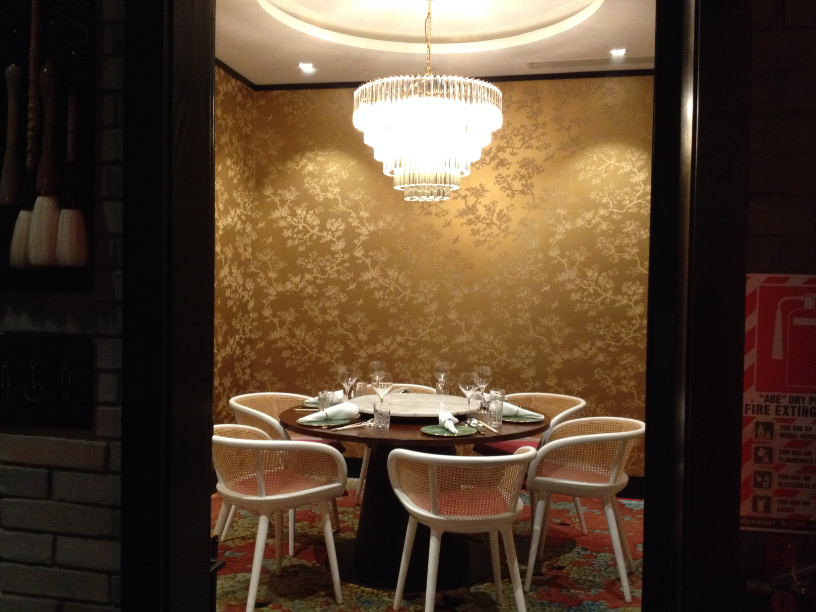
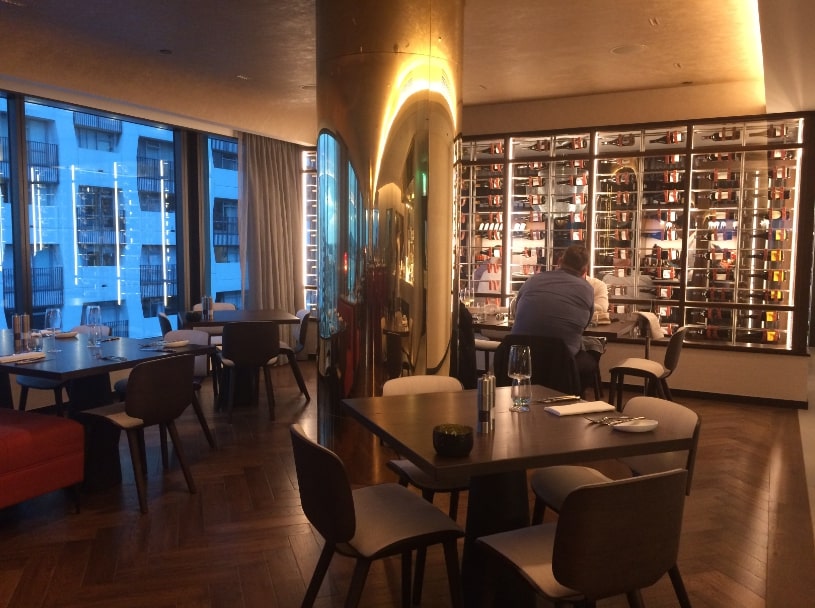
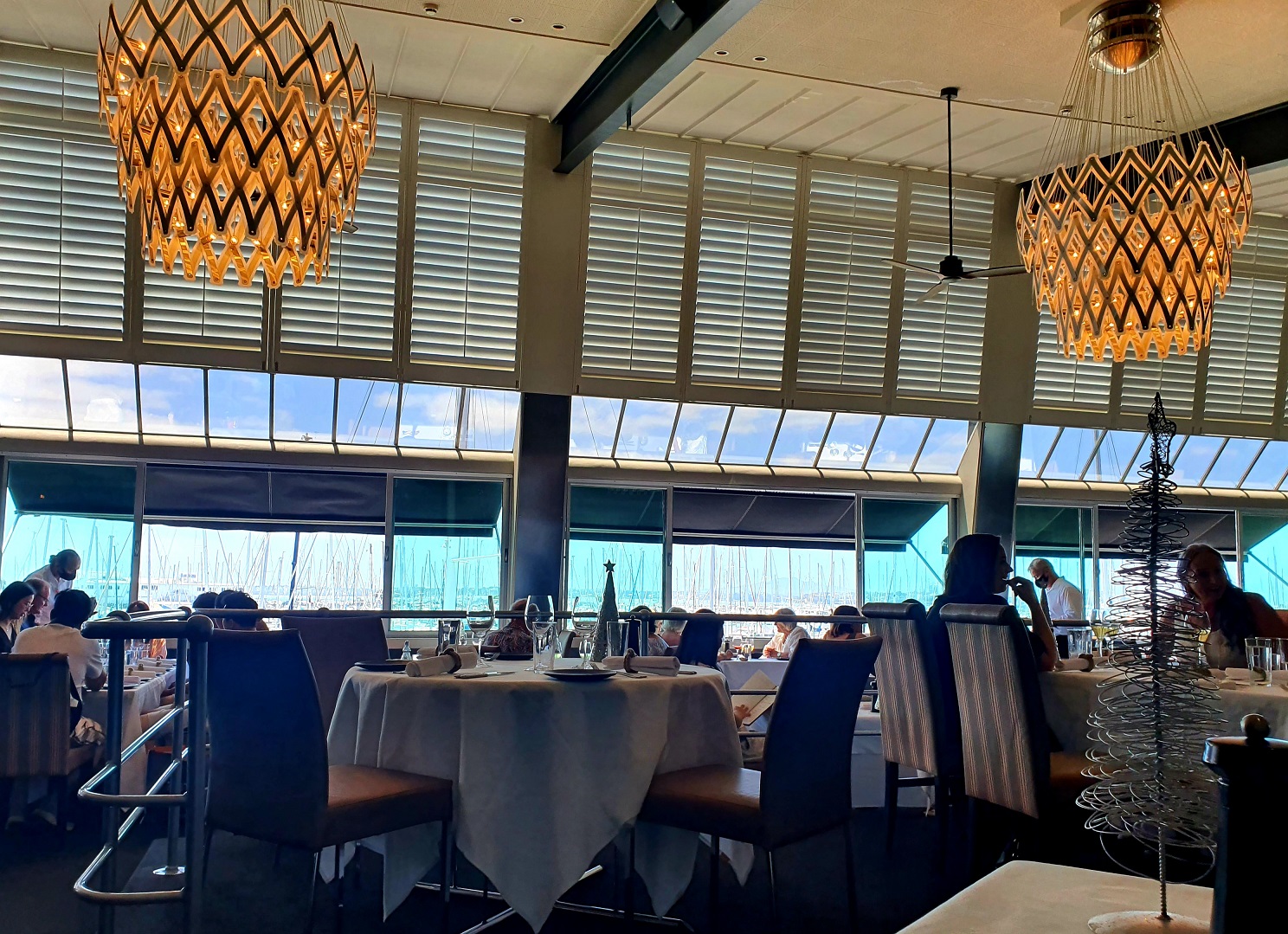
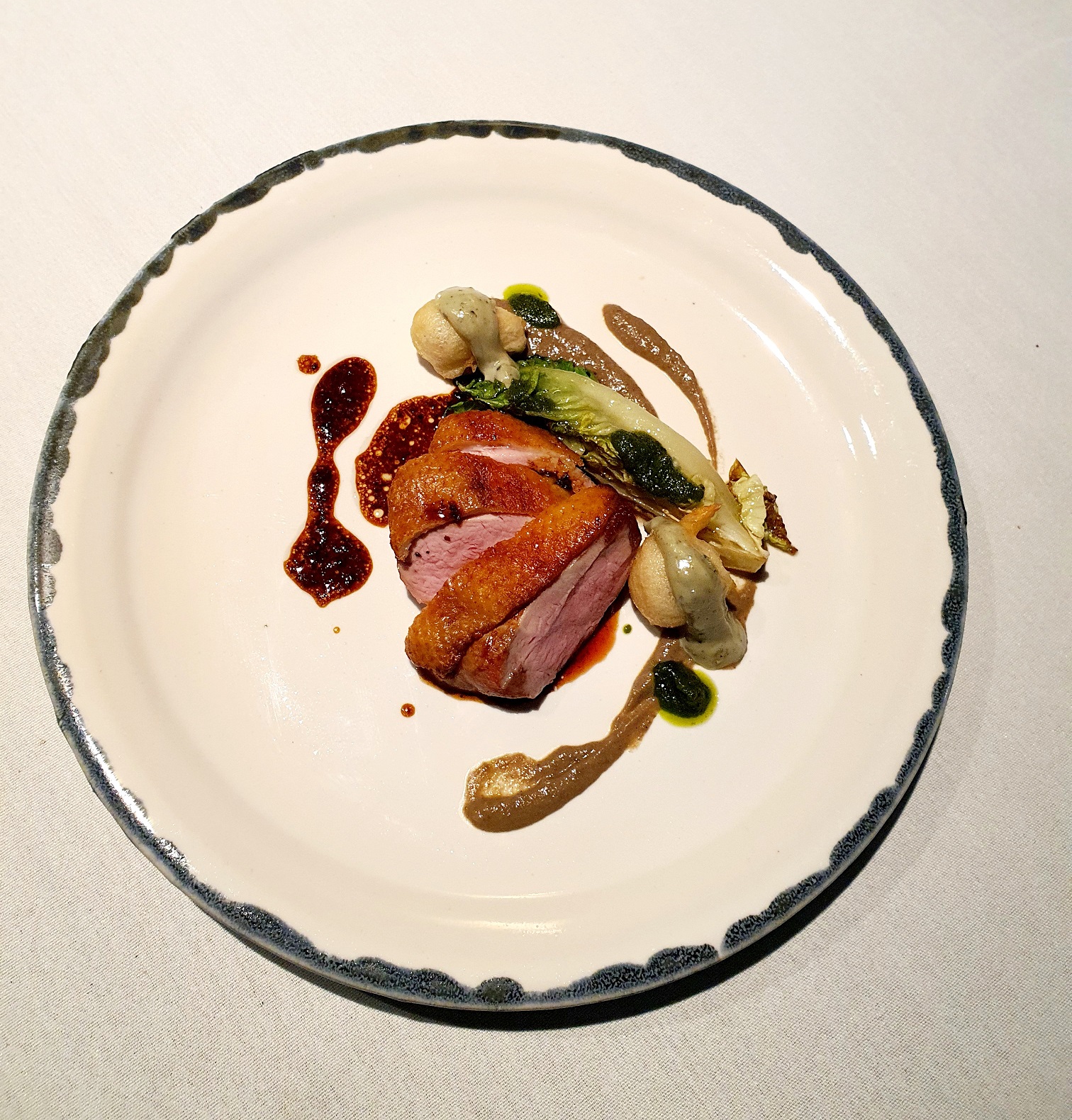
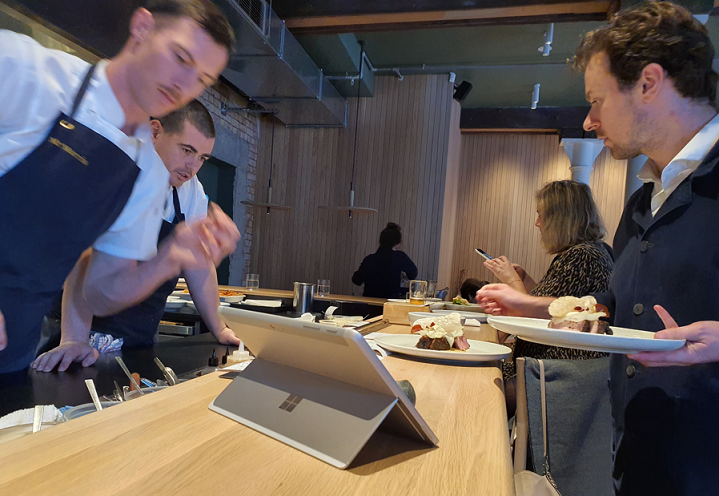
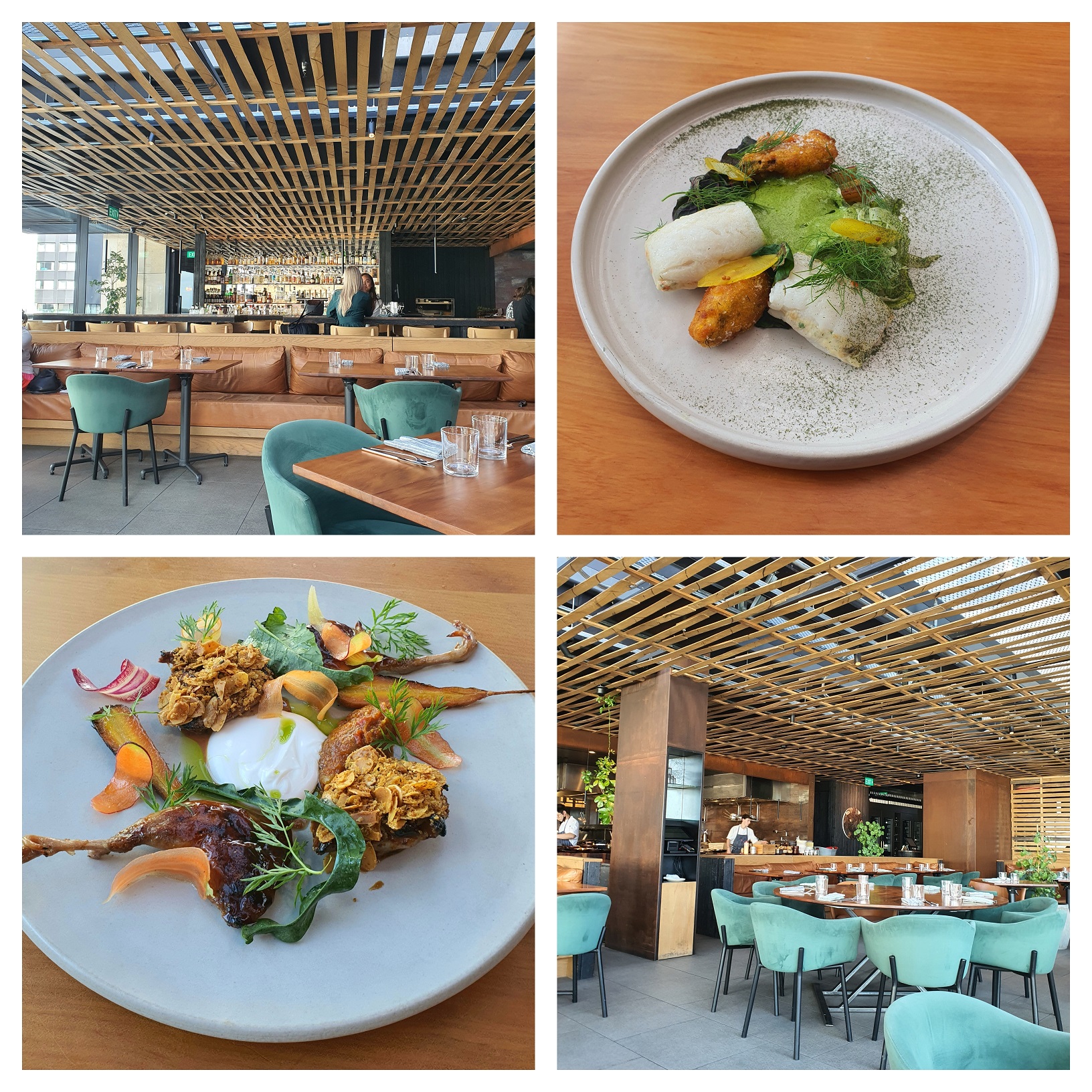
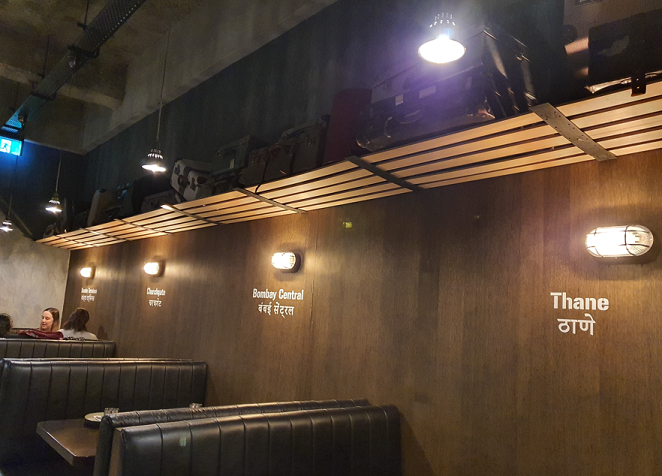
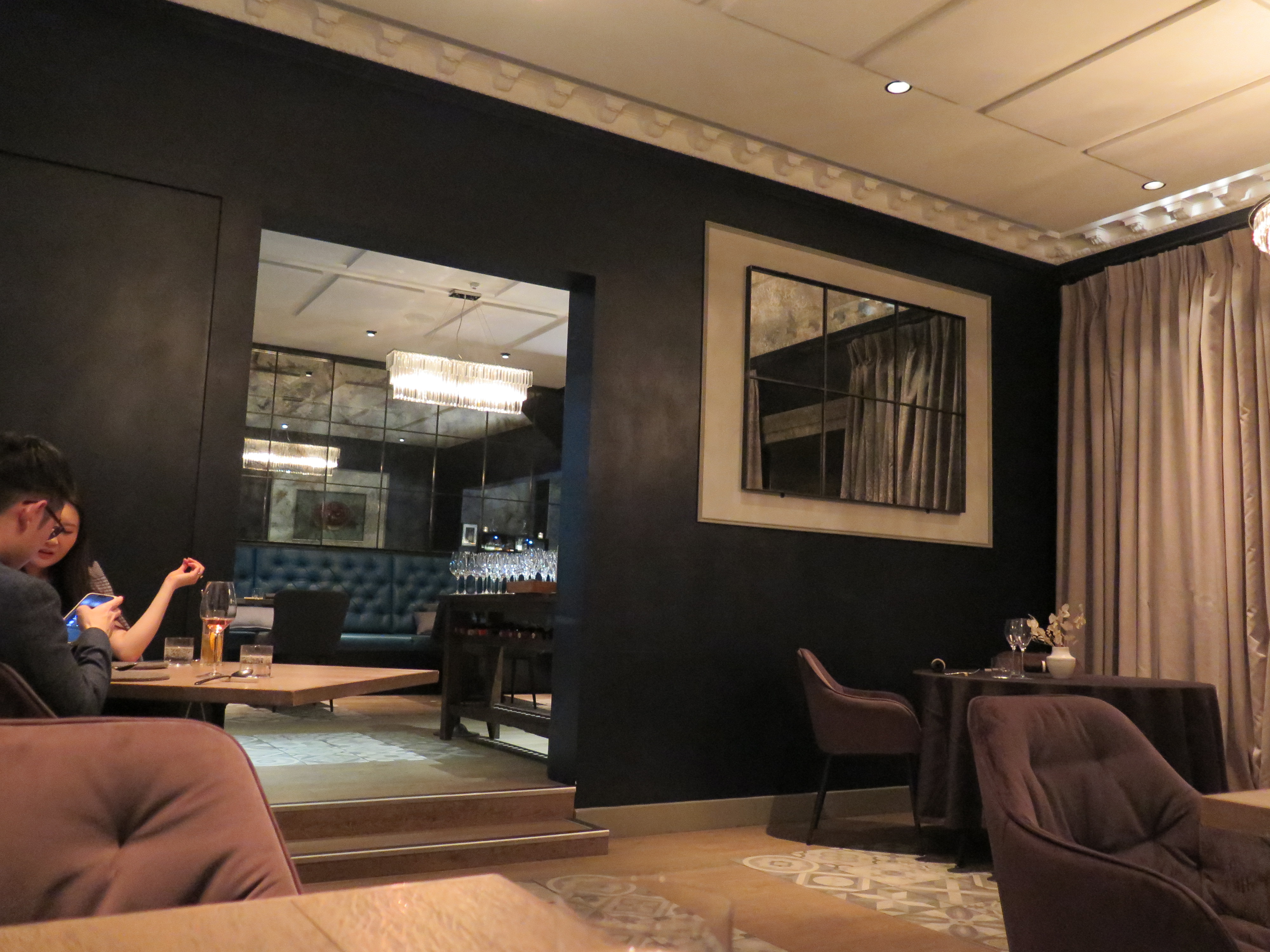
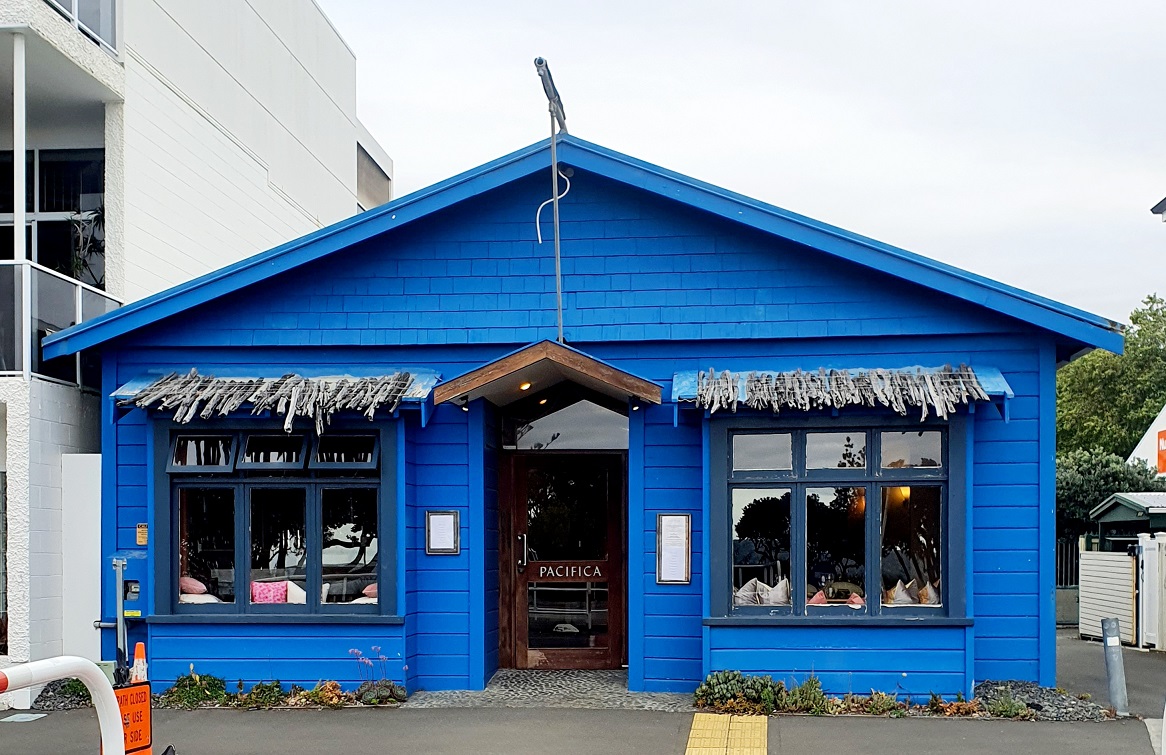
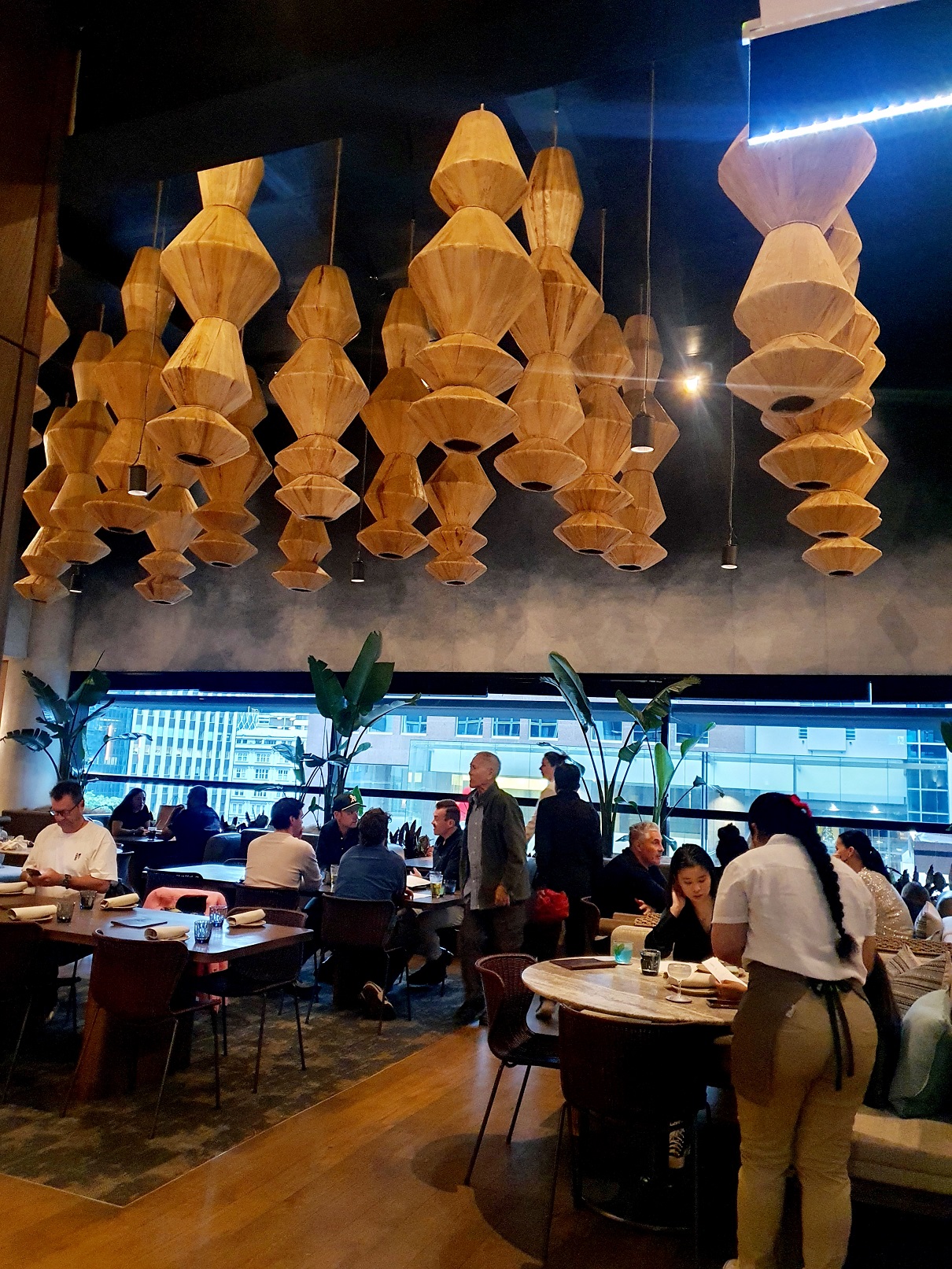





0 COMMENTS
WRITE COMMENT